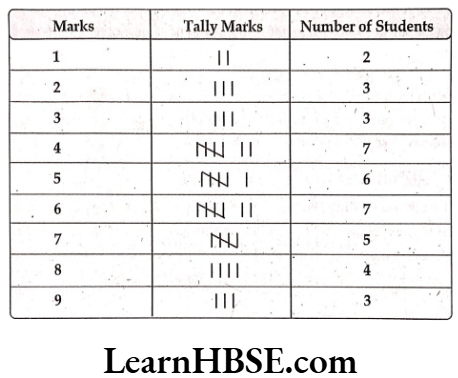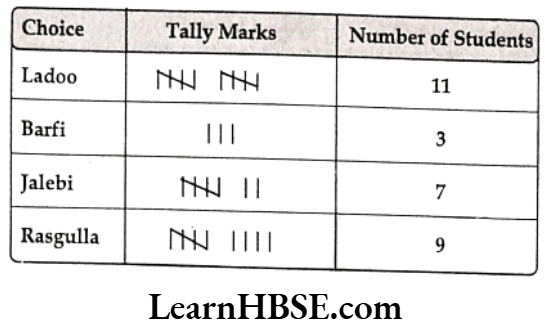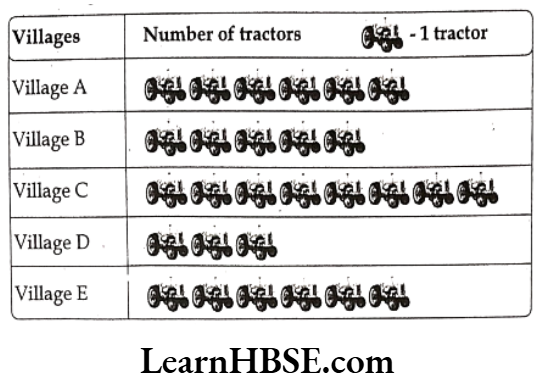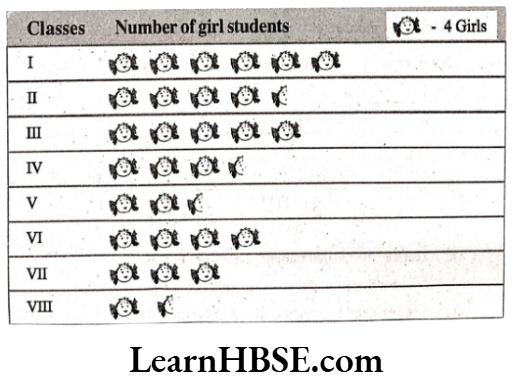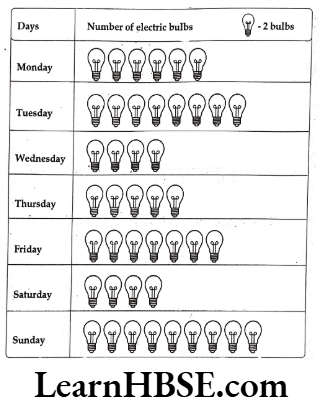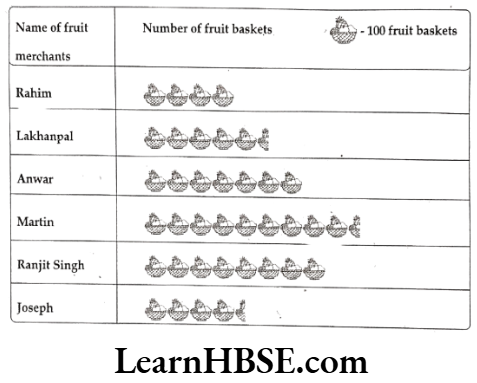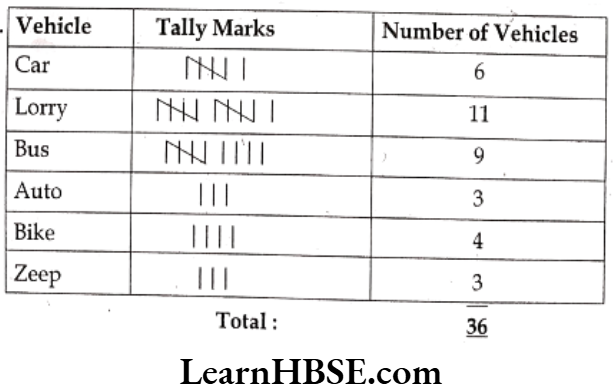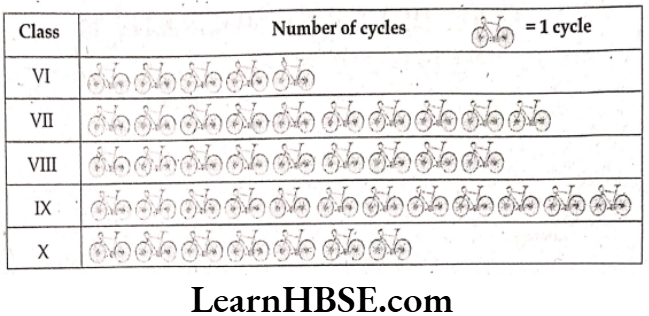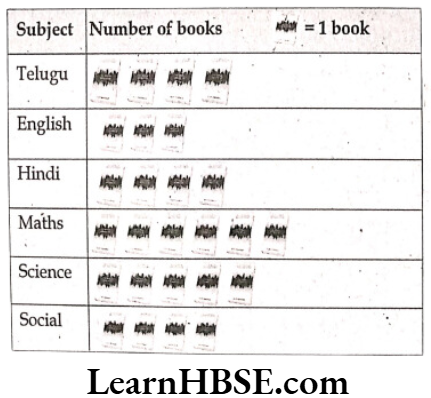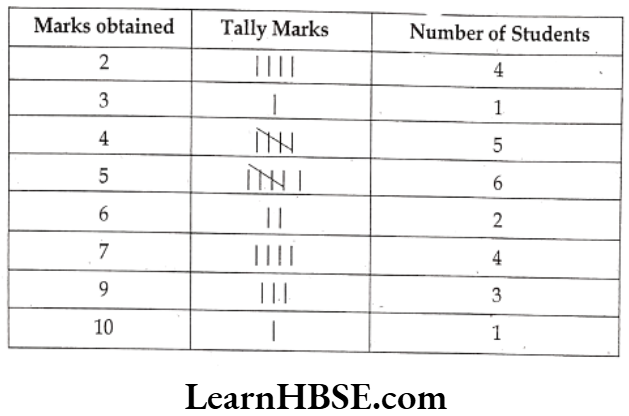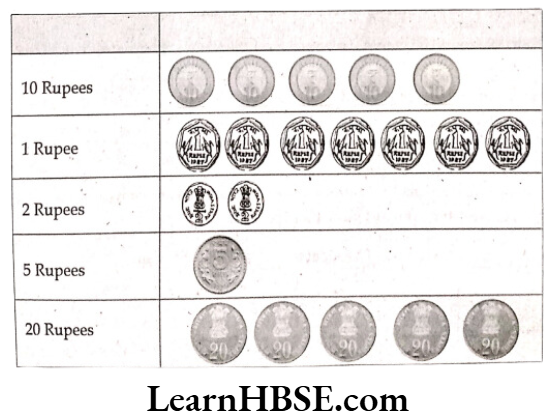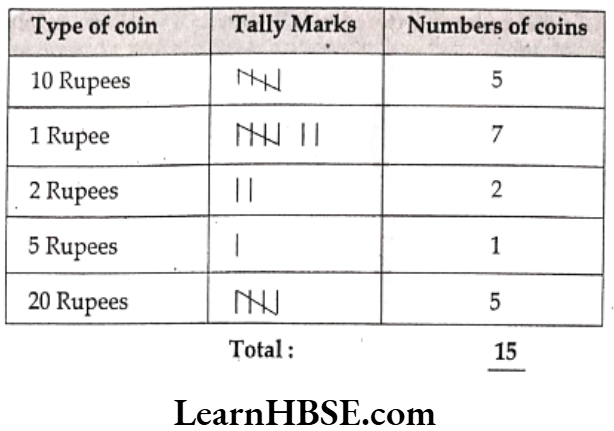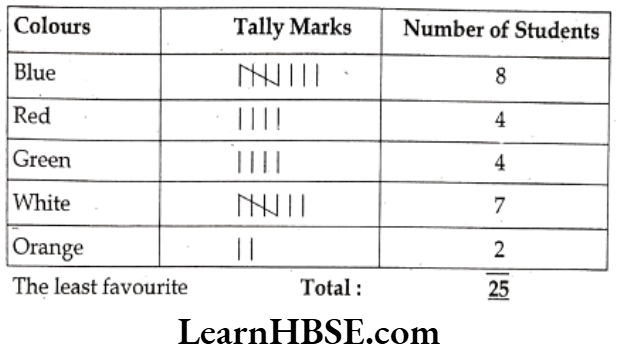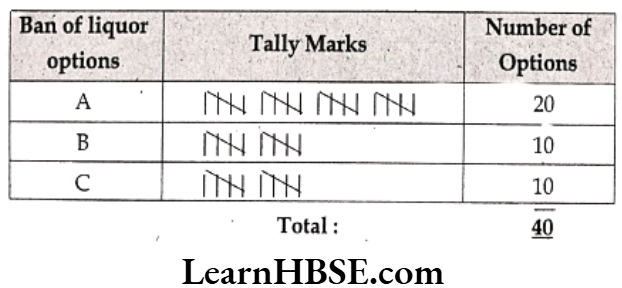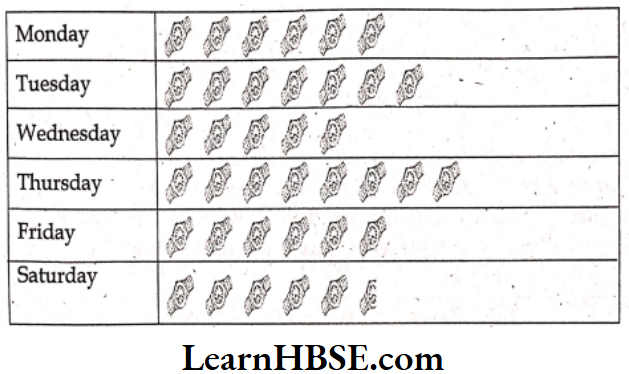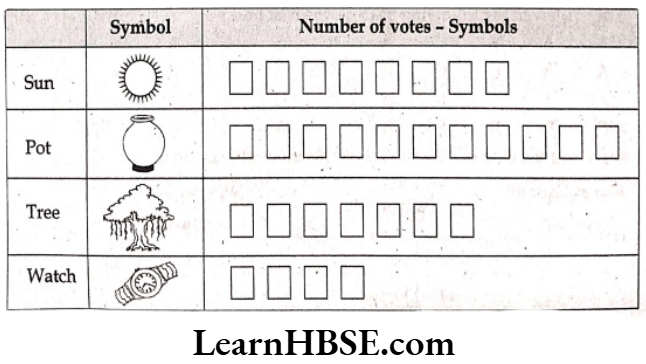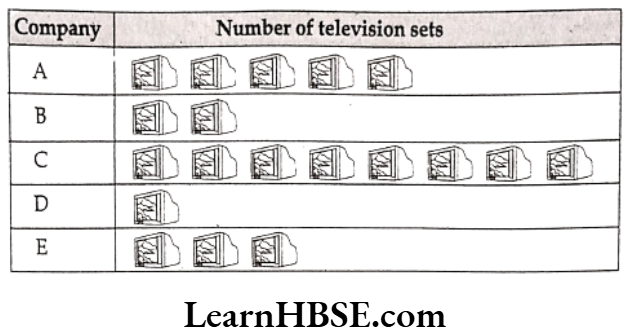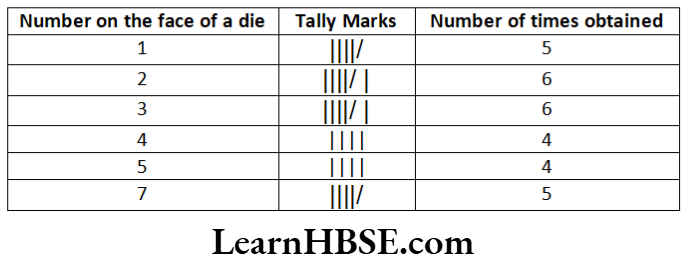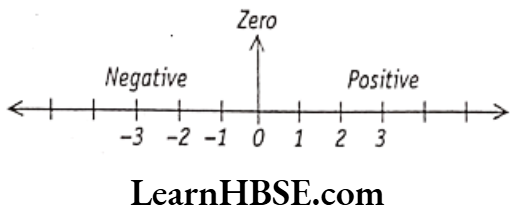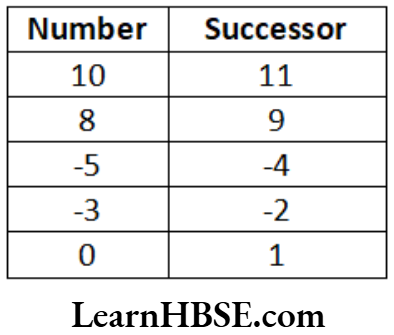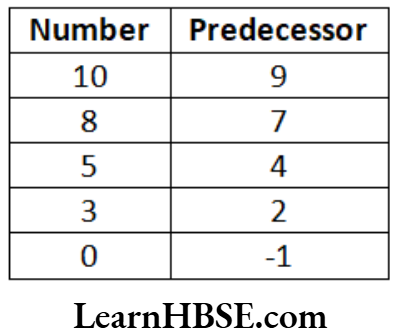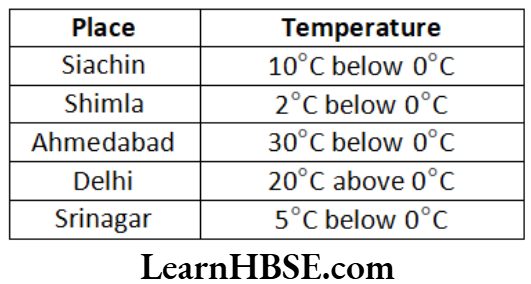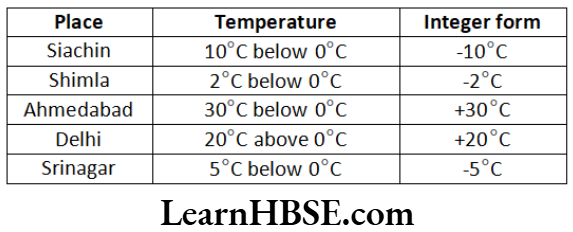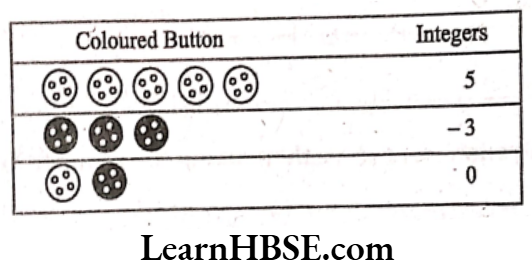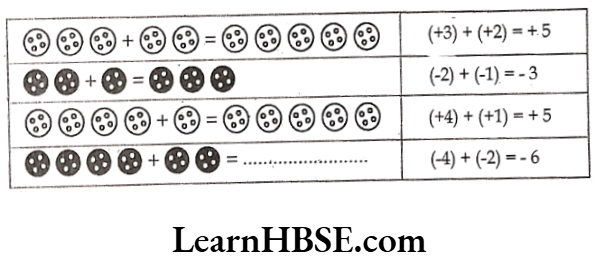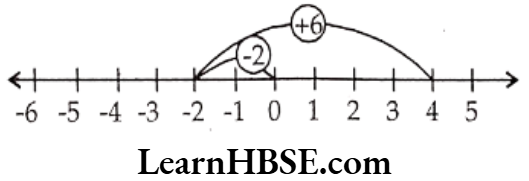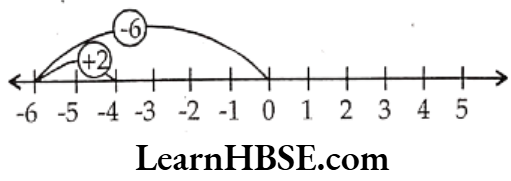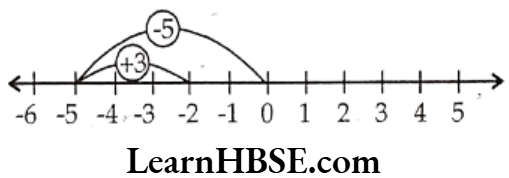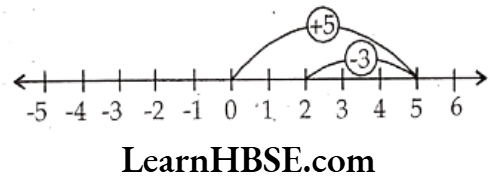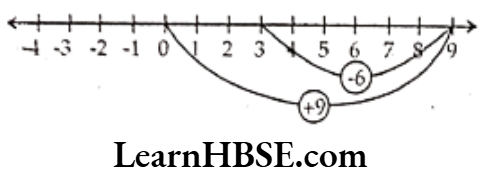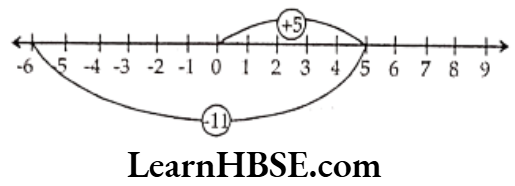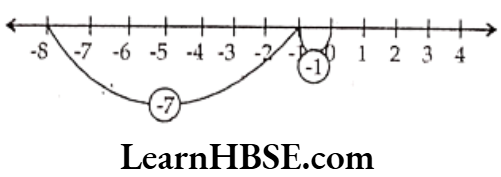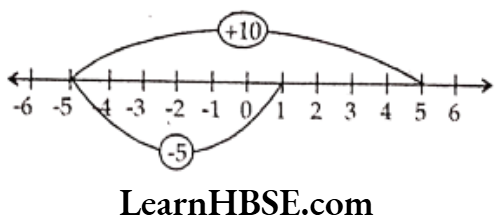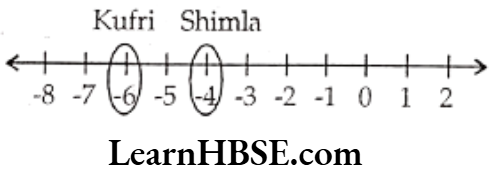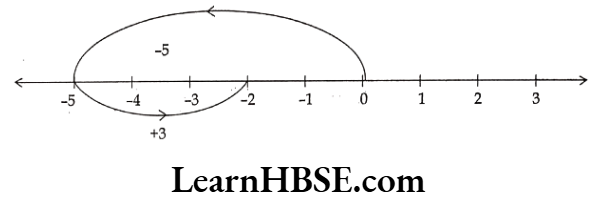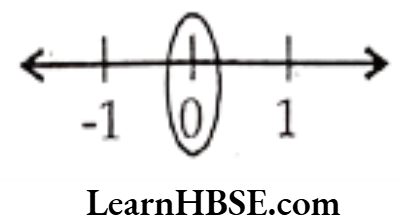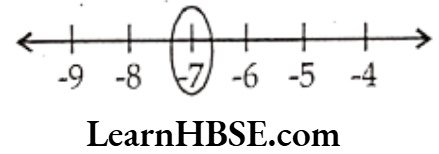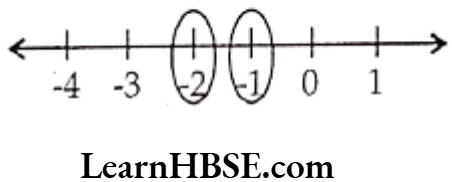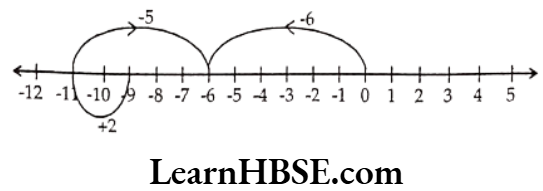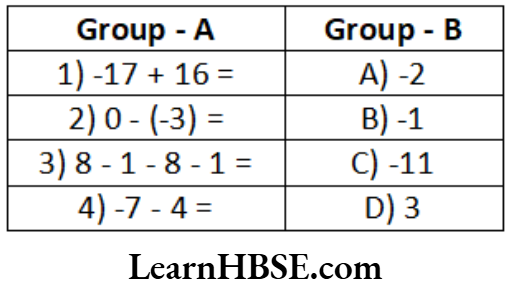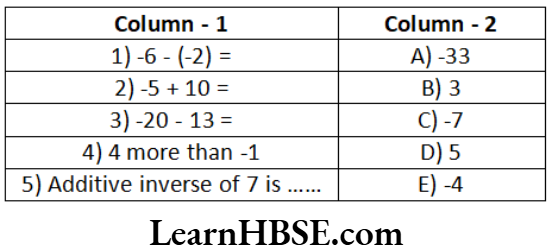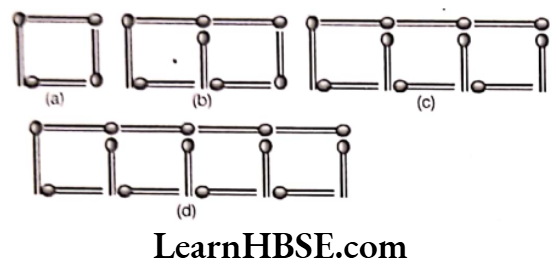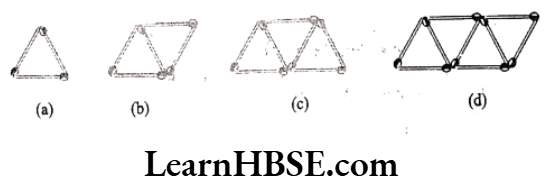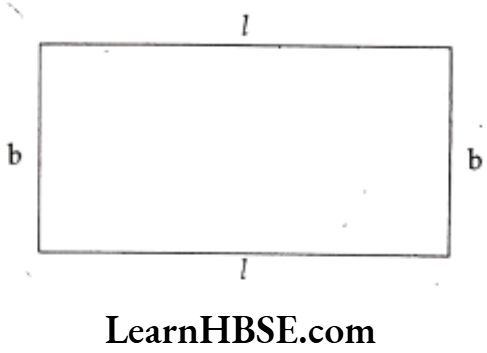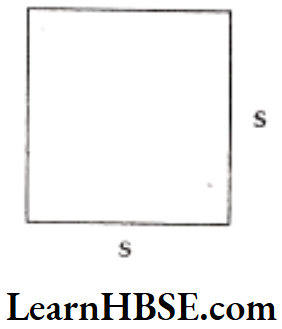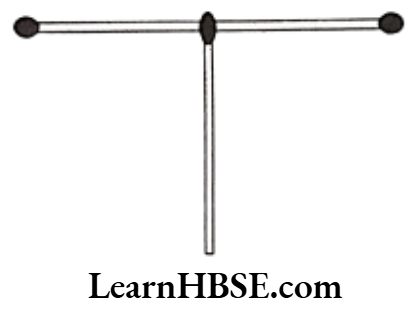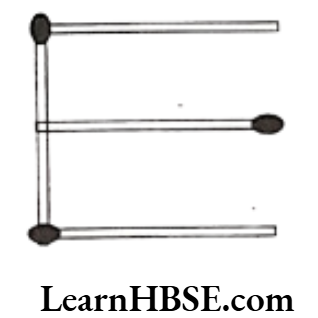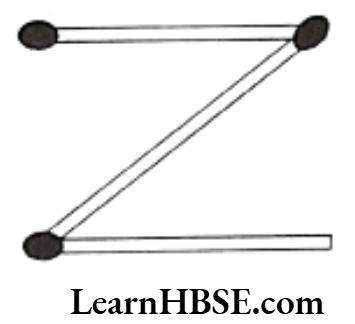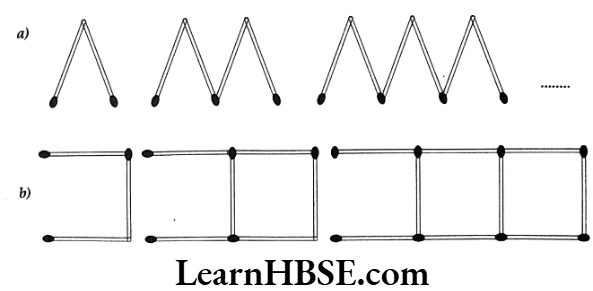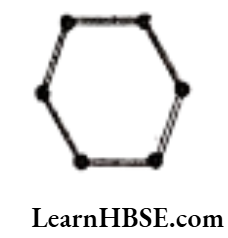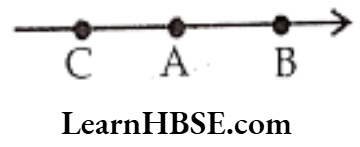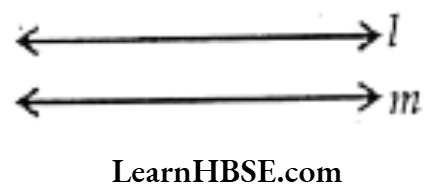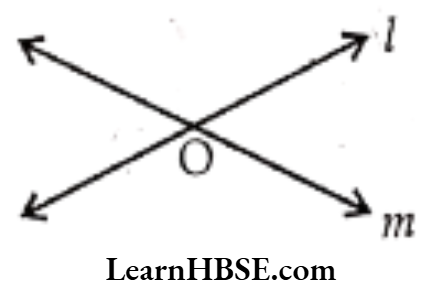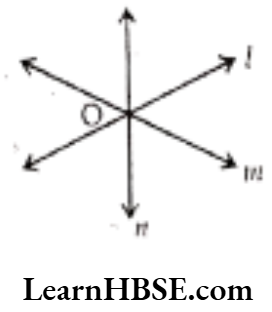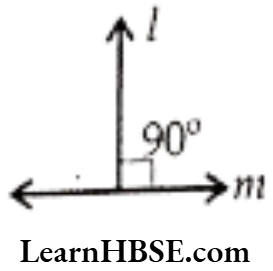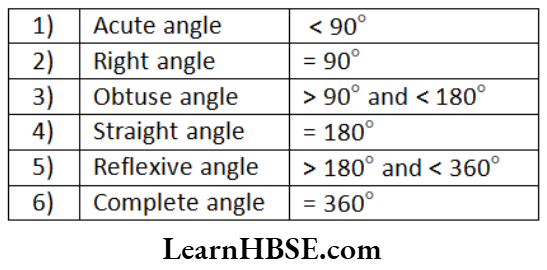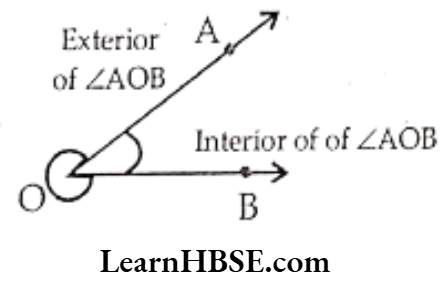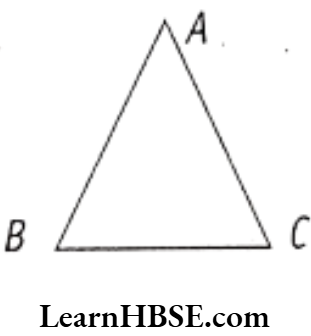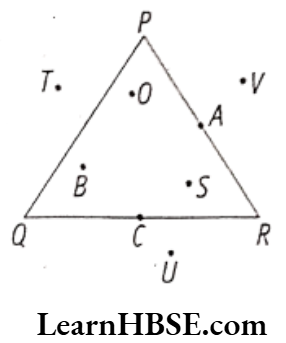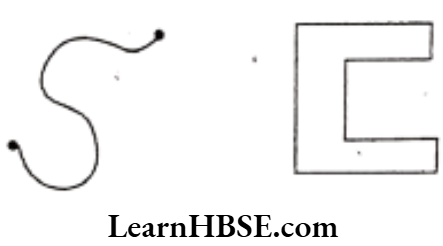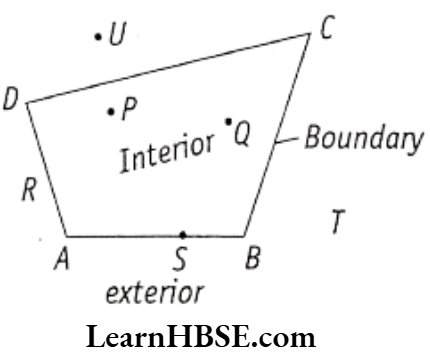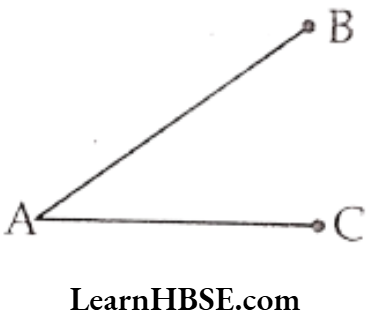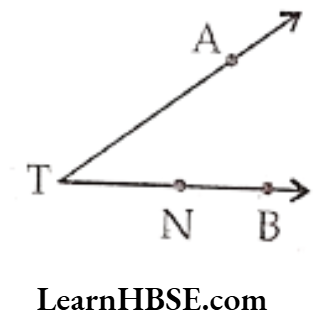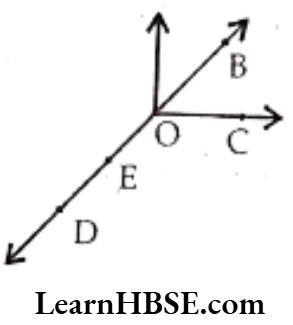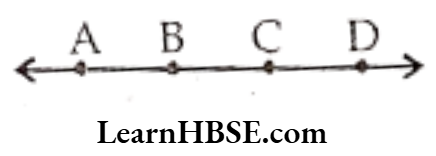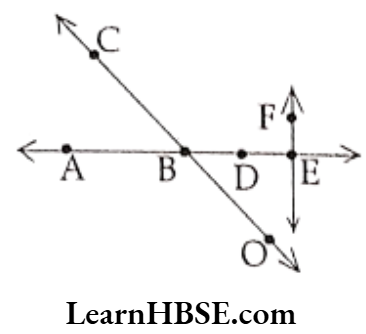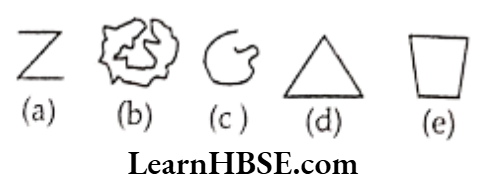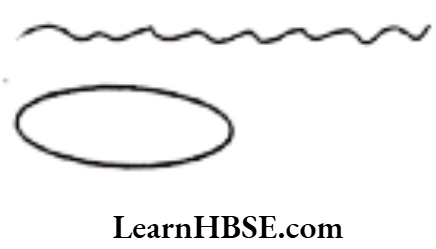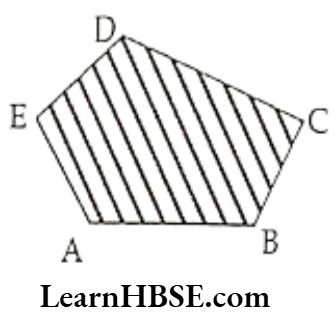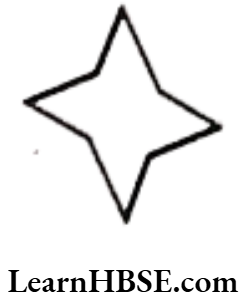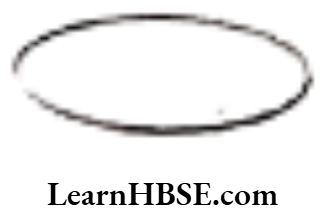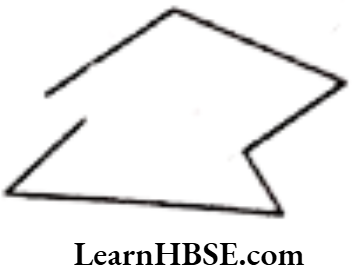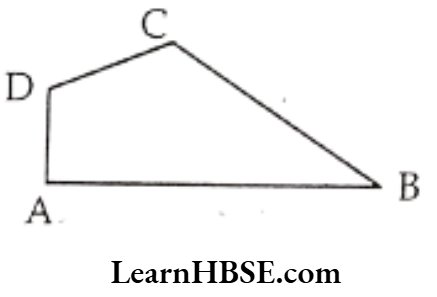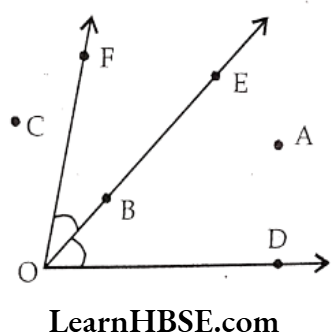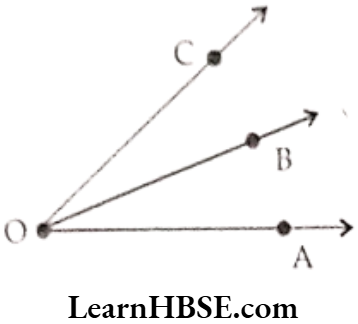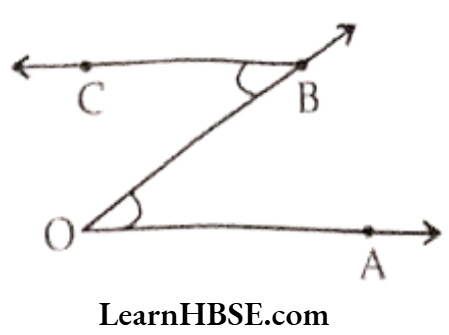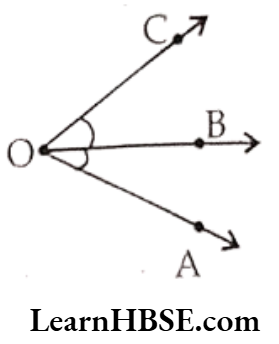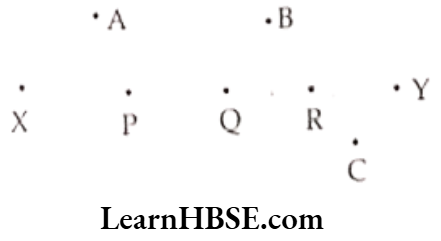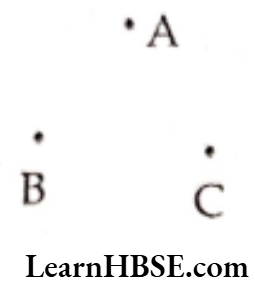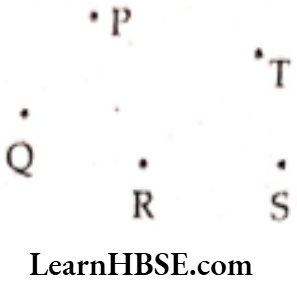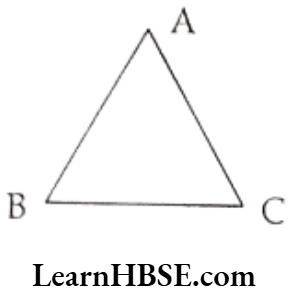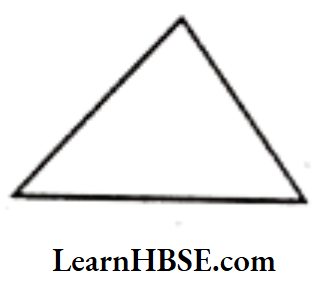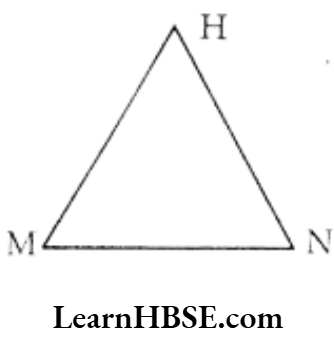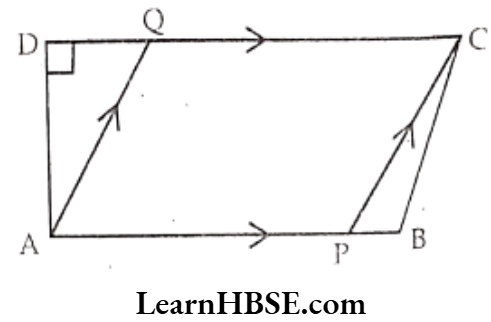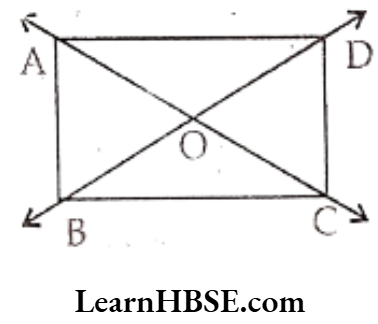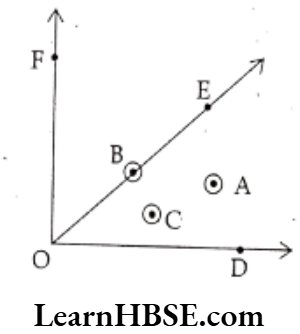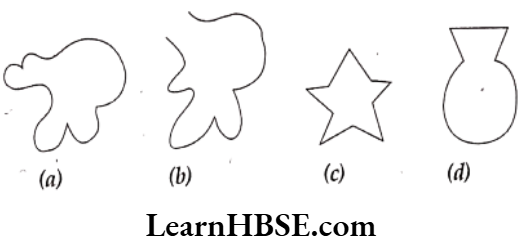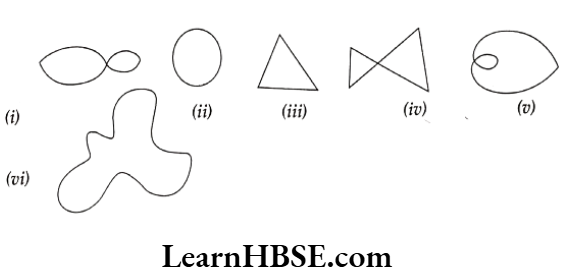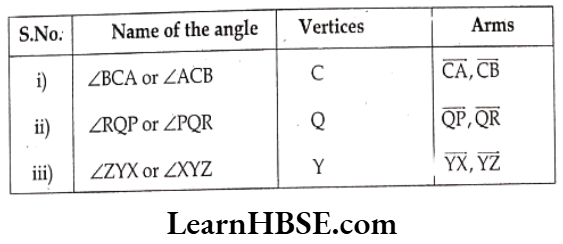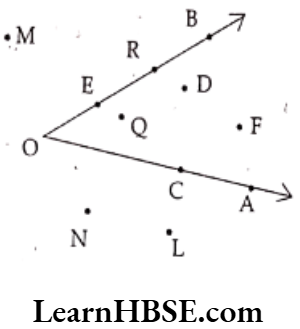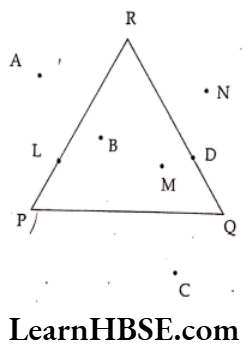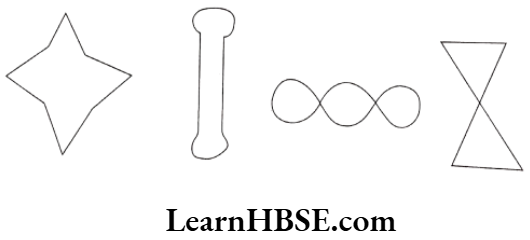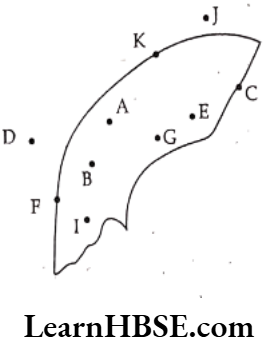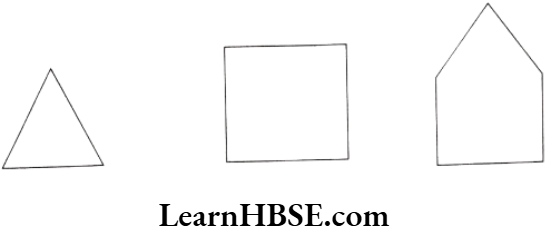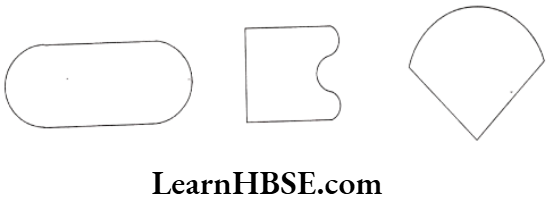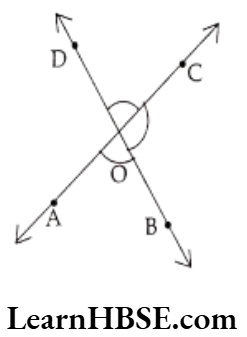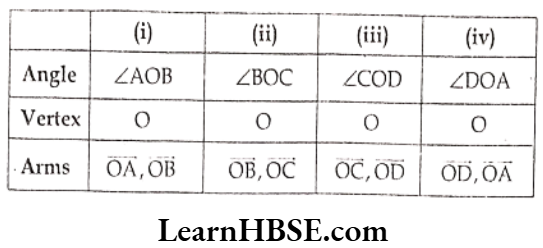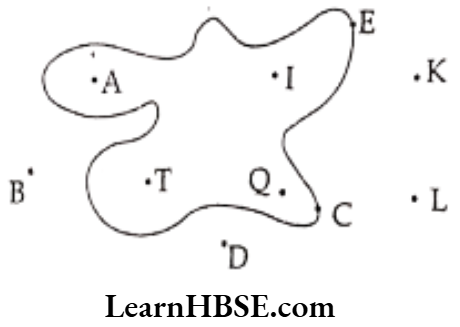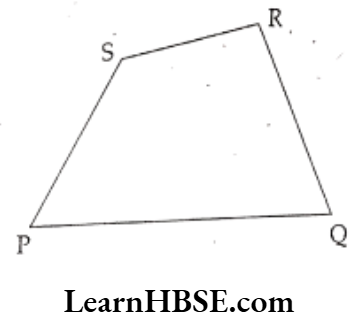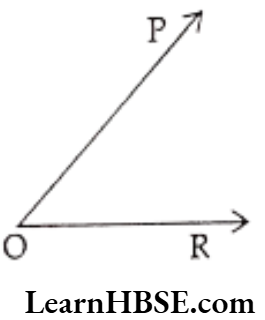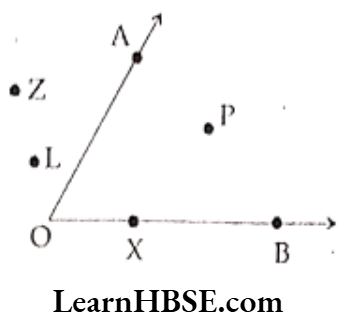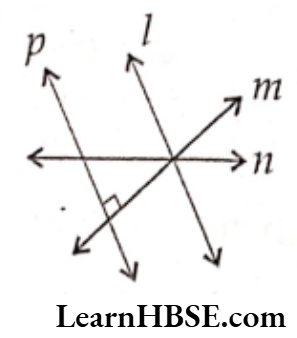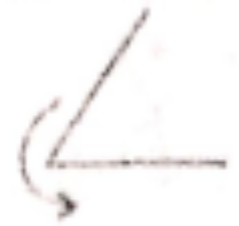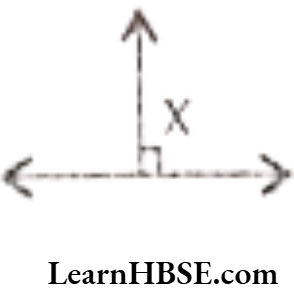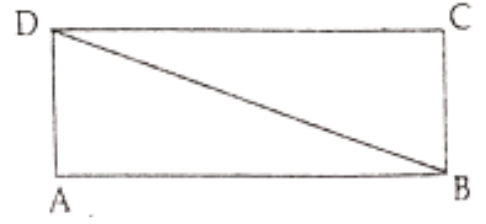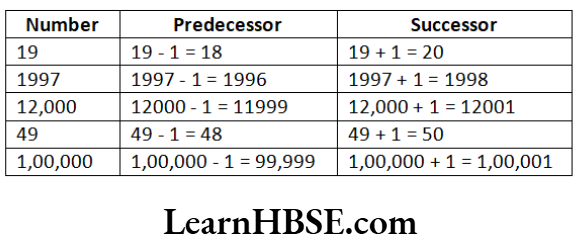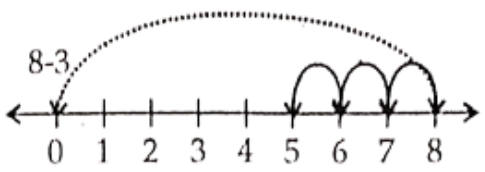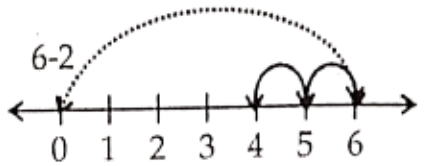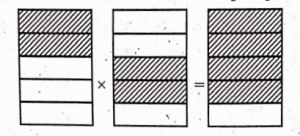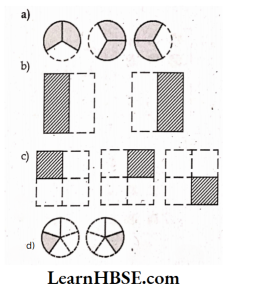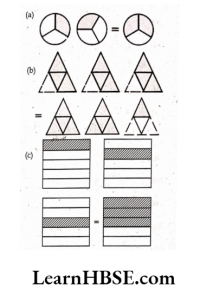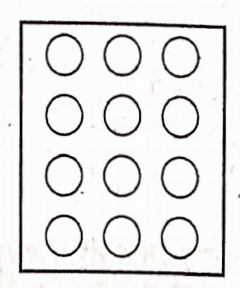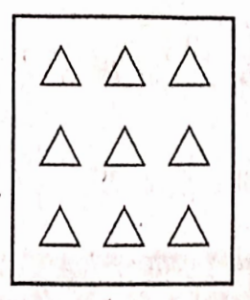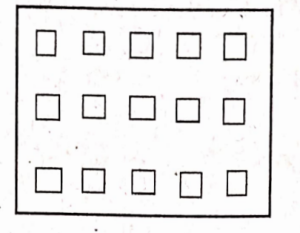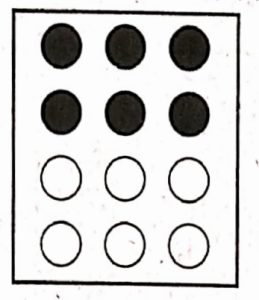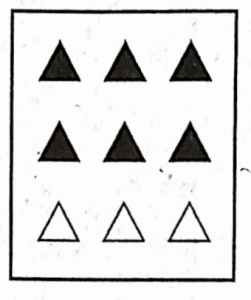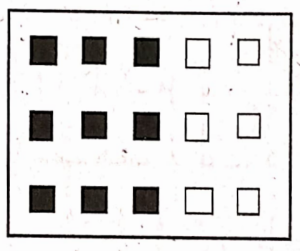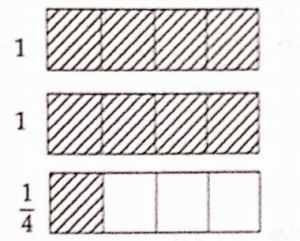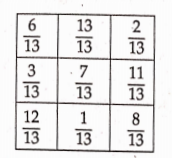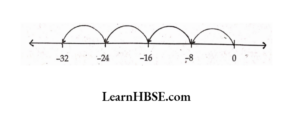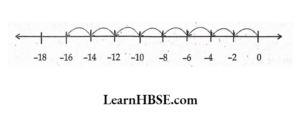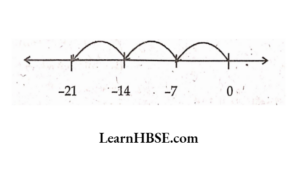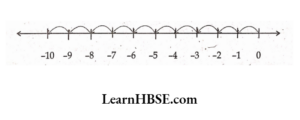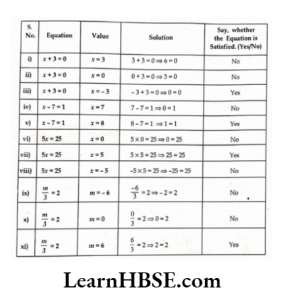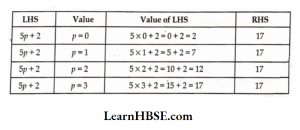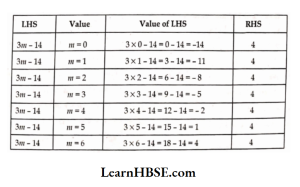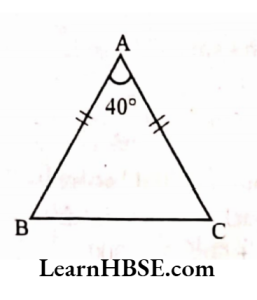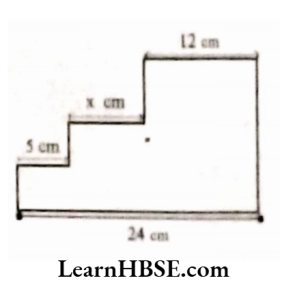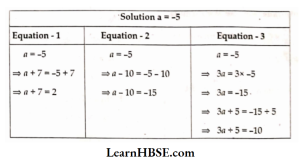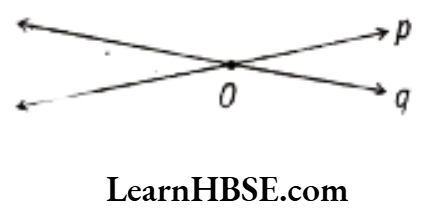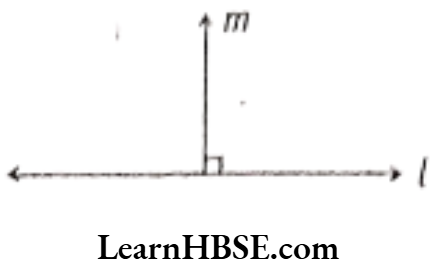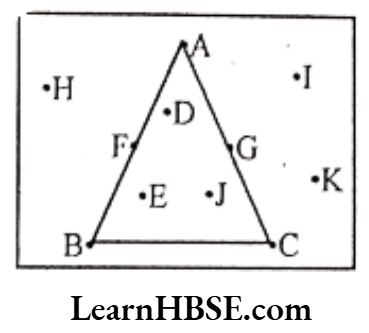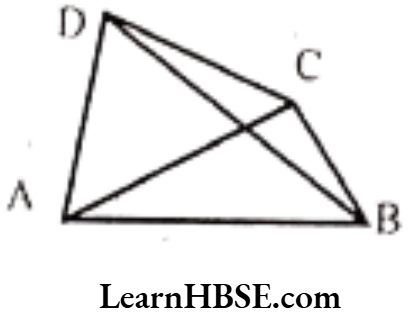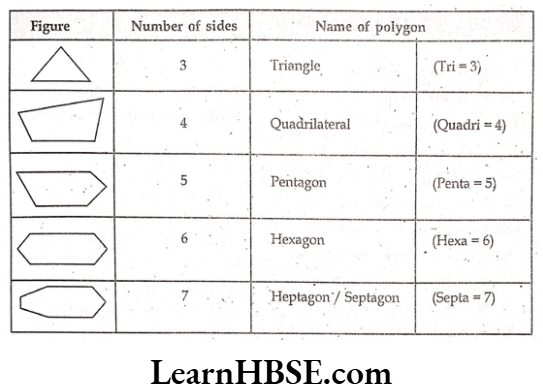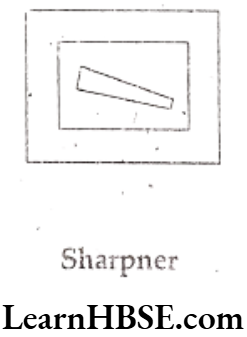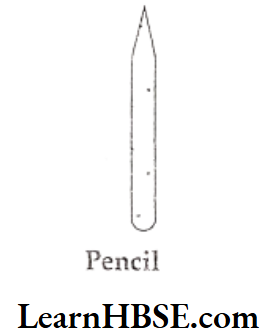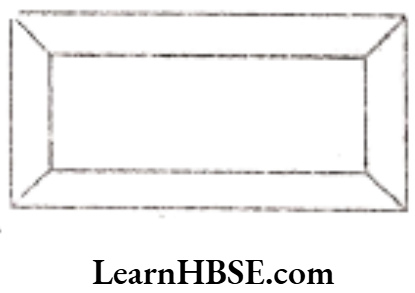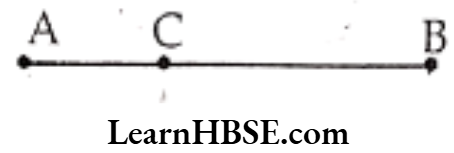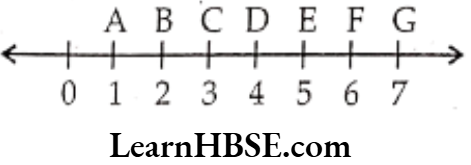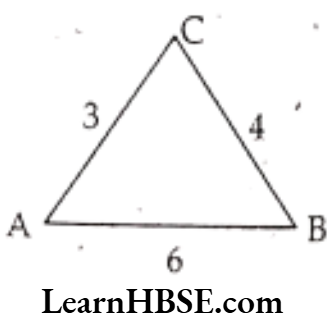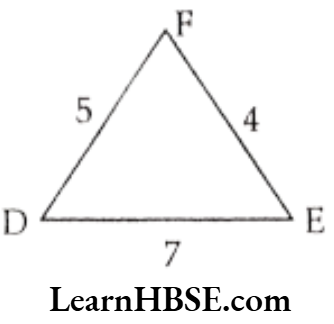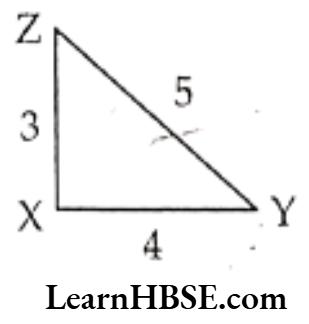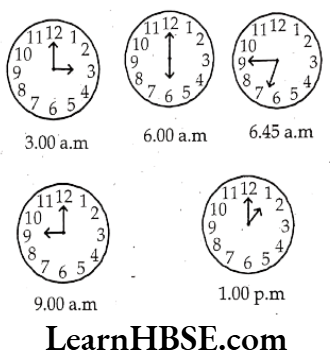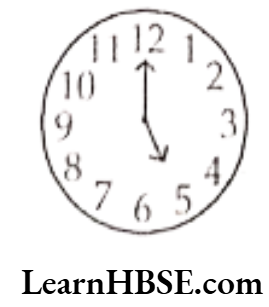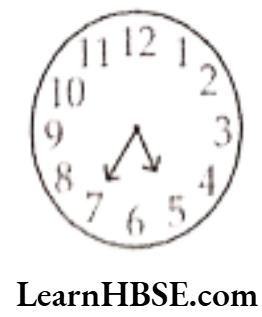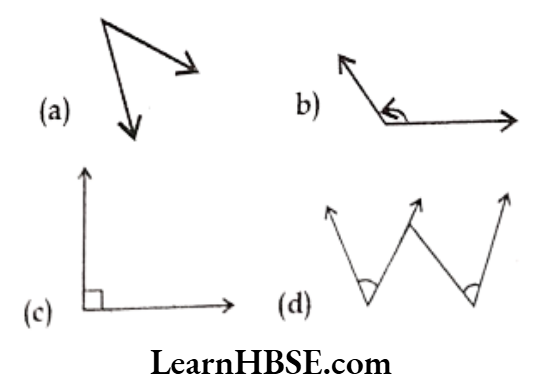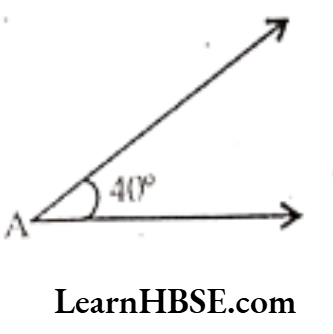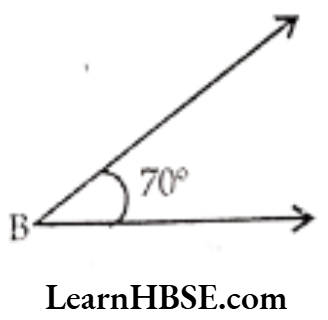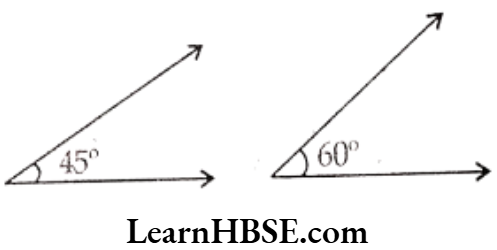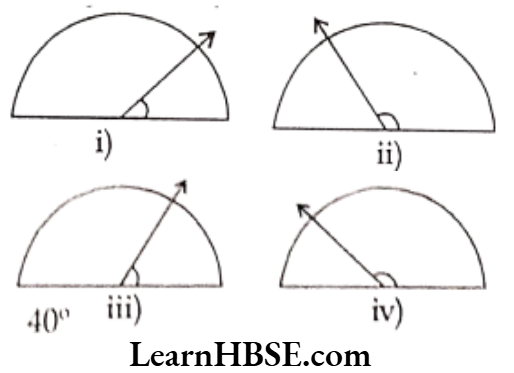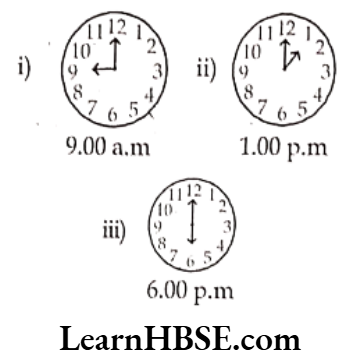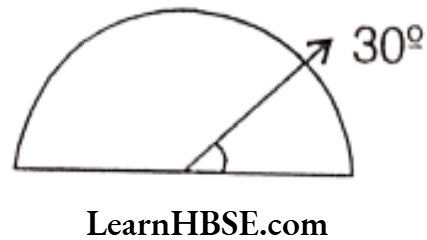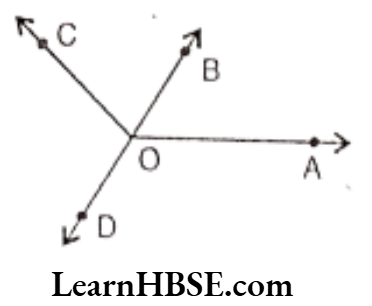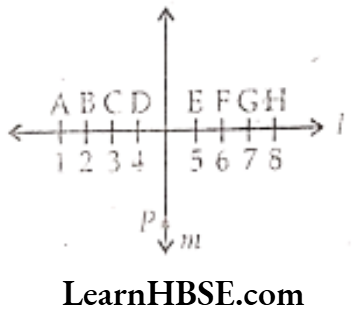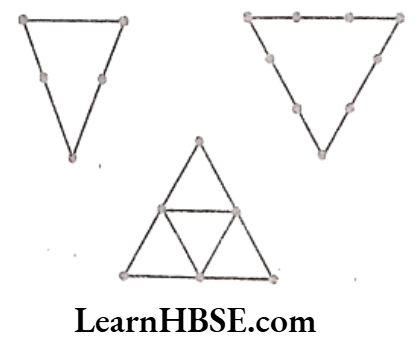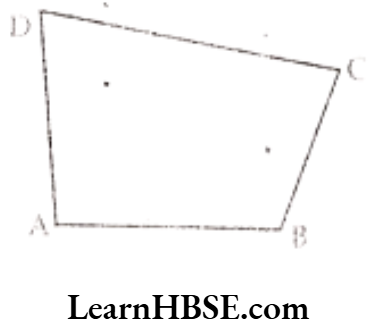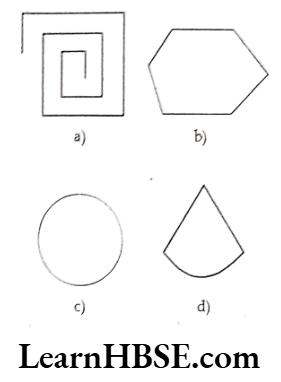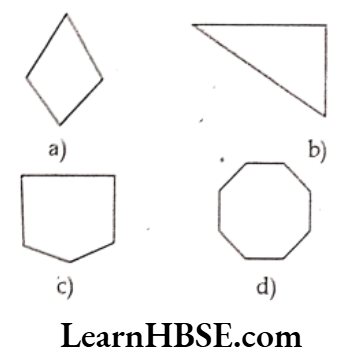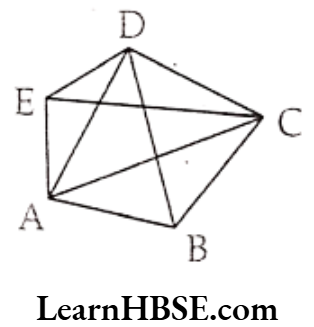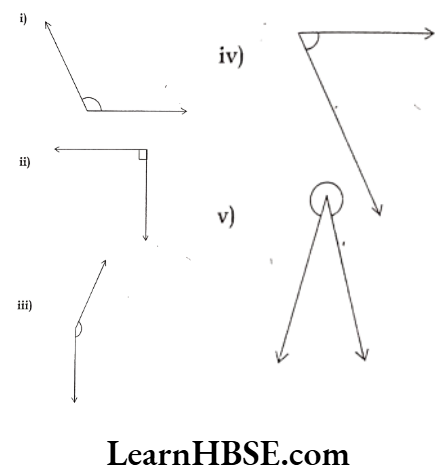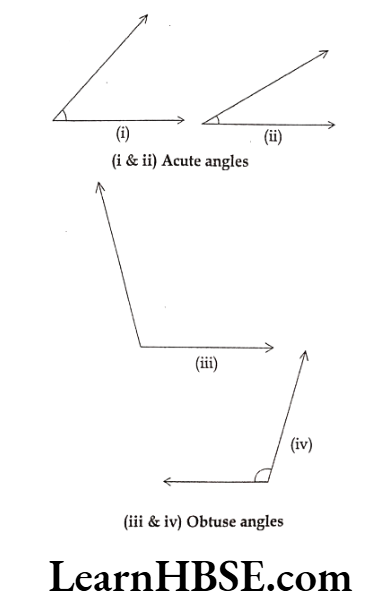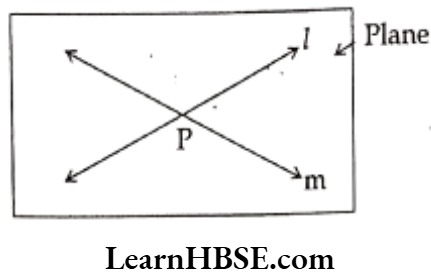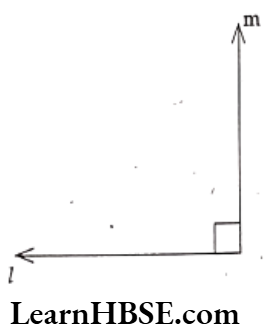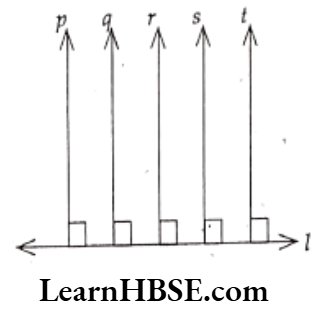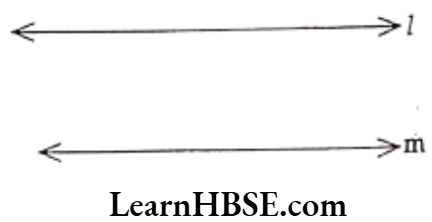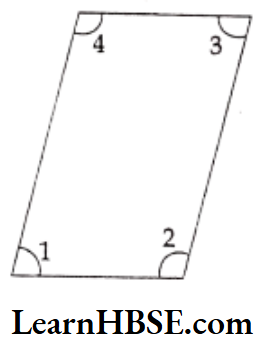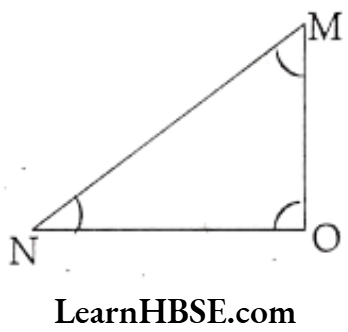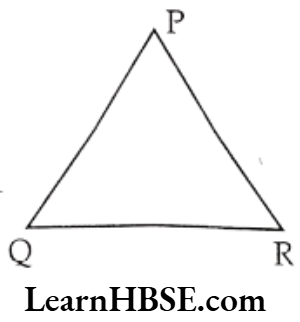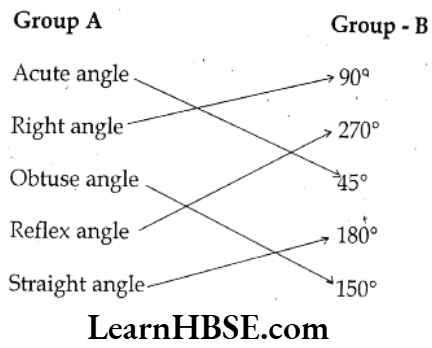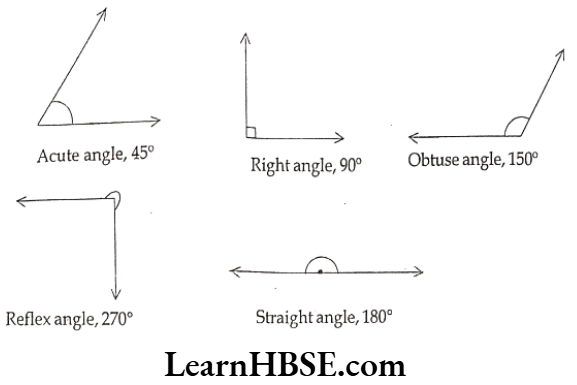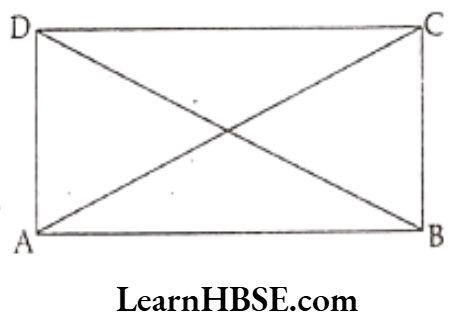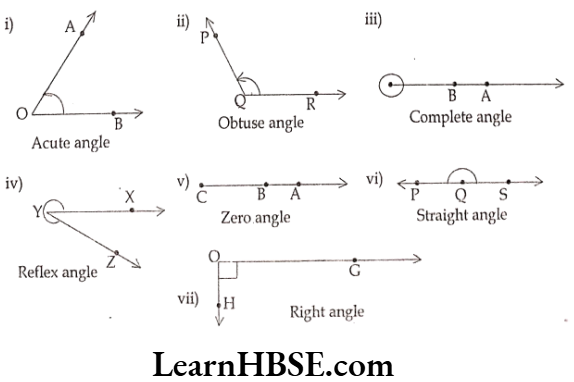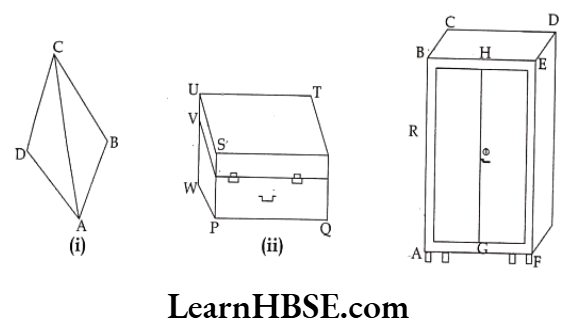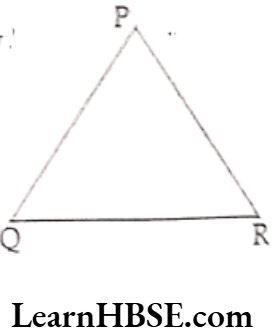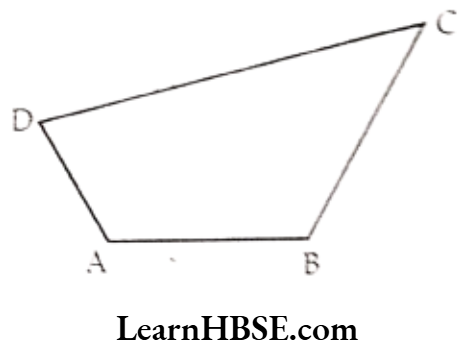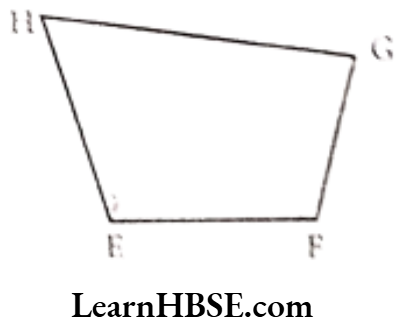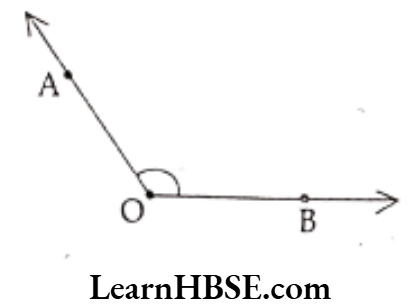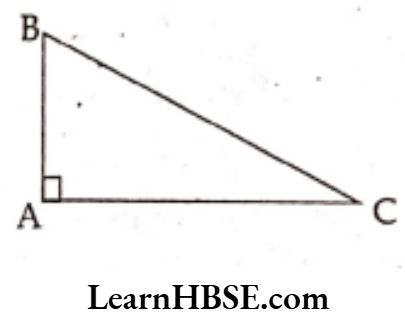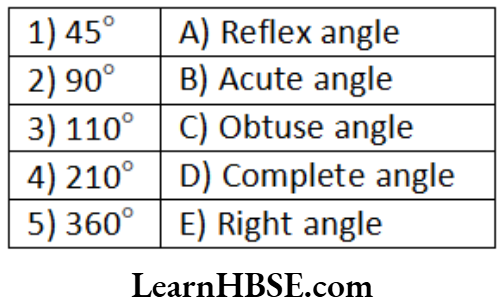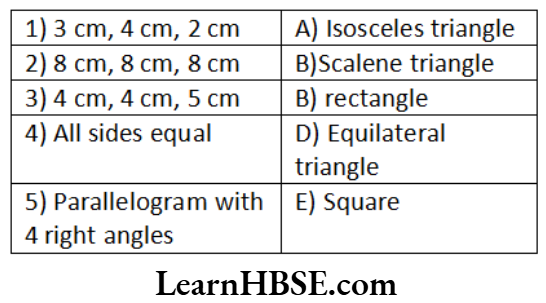Haryana Board Class 6 Maths Solutions For Chapter 10 Mensuration
- Perimeter is the distance covered along the boundary forming a closed figure when you go round the figure once.
- The length of the boundary of a closed figure is called its ‘Perimeter’ (Or) Sum of all the lengths of a polygon is called its ‘Perimeter’.
- The perimeter of a rectangle = 2 [length + breadth]
- Perimeter of a square = 4 x [length of its side]
- Perimeter of a equilateral triangle = 3 x length of the side.
- Circumference [Perimeter] of a circle = πd (Or) 2πr
- The place occupied by an object is called area of the object. Area is measured in square units.
- Area of a rectangle = length x breadth
- Area of a square = side x side
Question 1. Meera went to a park 150 m long and 80m wide. She took one complete round on its boundary. What is the distance covered by her?
Solution.
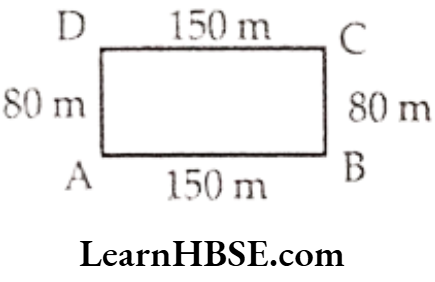
Distance covered by Meera
= AB + BC + DC + DA
= (150 + 80 + 150 + 80) m
= 460 m
Haryana Board Class 6 Maths Mensuration solutions
Question 2. Find the perimeter of the following figures:
Solution. a)
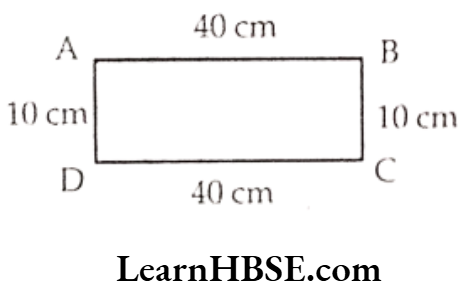
Perimeter
= AB + BC + CD + DA
= 40 m + 10 m + 40 m + 10m
= 100 m
b)
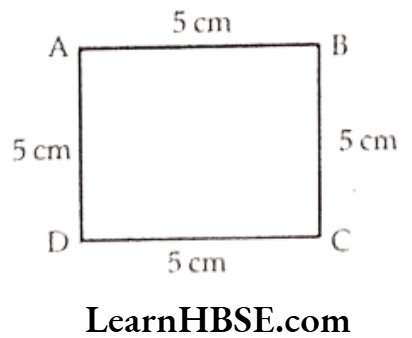
Perimeter
= AB + BC + CD + AD
= 5m + 5m + 5m + 5m
= 20 m
c)
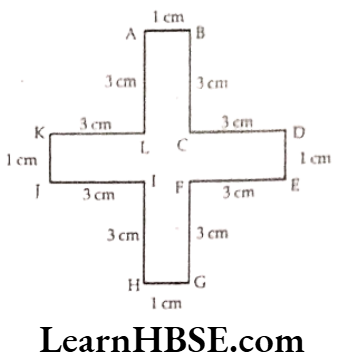
Perimeter
= AB + BC + CD + DE + EF + FG + GH + HI + IJ + JK + KL + LA
= 1 cm + 3 cm + 3 cm + 1 cm + 3 cm + 3cm + 1 cm + 3 cm + 3 cm + 1 cm + 3 cm + 3 cm
= 28 cm
Perimeter and area formulas for Class 6 HBSE Maths
d)

Perimeter
= AB + BC + CD + DE + EF + FA
= 100 m + 120 m + 90m + 45m + 60 m + 80 m
= 495 m
Question 3. Find the perimeter of the following rectangles:
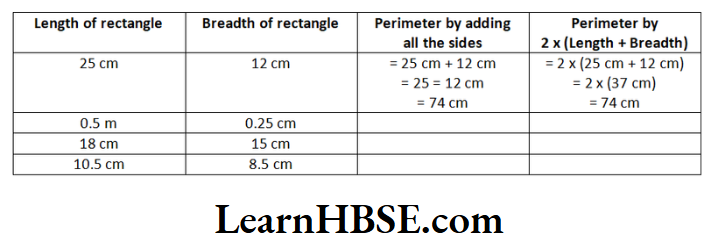
Solution. 1) Perimeter = 2(1 + b) = 2 (0.5 m + 0.25 m)
= 2(0.75) m = 1.5 m
Perimeter by adding all the sides
= 0.5 + 0.25 + 0.5 + 0.25
= 1.5 m
2) Perimeter = 2(1 + b)= 2(18 cm + 15 cm) = 66 cm.
Perimeter by adding all the sides
= 18 + 15 + 18 + 15 = 66 cm.
3) Perimeter = 2(1 + b)
= 2 (10.5 cm + 8.5 cm)
= 2 (19 cm) = 38 cm.
Perimeter by adding all the sides
= 10.5 + 8.5 + 10.5 + 8.5
= 38 cm.
Volume of cube and cuboid Class 6 HBSE Maths
Question 4. Find various objects from your surroundings which have regular shapes and find their perimeters.
1) Square:
Solution. 1) A square has four equal sides.
2) Let’s assume the length of one side is 5 cm.
3) The perimeter of a square is calculated by multiplying the length of one side by 4.
4) Therefore, the perimeter of the square would be 5 cm x 4 = 20 cm.
2) Rectangle:
Solution. 1) A rectangle has two pairs of equal sides (opposite sides)
2) Let’s assume the length of one side is 6 cm and the length of the adjacent side is 8 cm.
3) The perimeter of a rectangle is calculated by adding the lengths of all four sides.
4) Therefore, the perimeter of the rectangle would be (6 cm + 8 cm) x 2 = 28 cm..
3) Circle:
Solution. 1) A circle is a curved shape with a constant radius.
2) Let’s assume the radius of a circle is 3 cm.
3) The perimeter of a circle is called its circumference and is calculated using the formula: 2 × π × radius.
4) Therefore, the perimeter (circumference) of the circle would be
2 x 3.14 x 3 cm = 18.84 cm.
Please note that these are just examples, and the actual objects around you may have different dimensions and perimeters.
Haryana Board Class 6 Maths Solutions For Chapter 10 Mensuration Exercise 10.1
Question 1. Find the perimeter of each of the following figures:
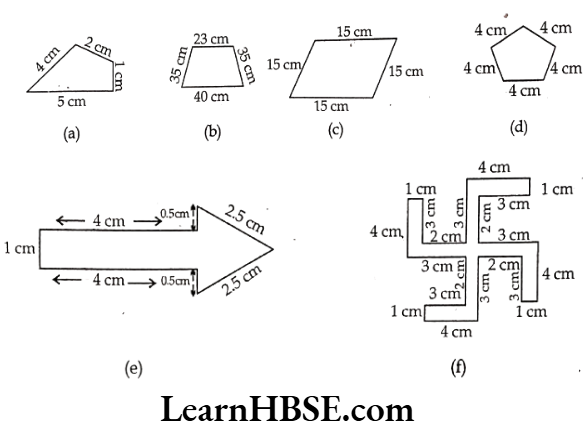
Solution. a) Perimeter
5 cm + 1 cm + 2 cm + 4 cm
= 12 cm
b) Perimeter
= 40 cm + 35 cm + 23 cm + 35 cm
= 133 cm
c) Perimeter =
= 15 cm + 15 cm + 15 cm + 15 cm
= 60 cm
d) Perimeter = 4 cm + 4 cm + 4 cm + 4 cm + 4 cm = 20 cm
e) Perimeter = 1 cm + 4 cm + 0.5 cm + 2.5 cm + 2.5 cm + 0.5cm + 4cm = 15cm
f) Perimeter = 1 cm + 3 cm + 2 cm + 3 cm + 4 cm + 1 cm + 3 cm + 2 cm + 3 cm + 4 cm + 1 cm, + 3 cm + 2 cm + 3 cm + 4 cm + 1 cm + 3 cm + 2 cm + 3 cm + 4 cm = 52 cm
Circumference and area of a circle Class 6 Haryana Board
Question 2. The lid of a rectangular box of sides 40 cm by 10 cm is sealed all round with tape. What is the length of the tape required?
Solution. Length of rectangular box = 40 cm
Breadth of rectangular box = 10 cm
Length of the tape required
= 2 (length + breadth)
= 2(40 cm + 10 cm)
= 2 × 50 cm
= 100 cm
= 1 m
Question 3. A table top measures 2 m 25 cm by 1 m 50 cm. What is the perimeter of the table-top?
Solution. Length = 2 m 25 cm = 2.25 m
Breadth = 1 m 50 cm = 1.5 m
Perimeter of top of the table
= 2(length + breadth)
= 2(2.25 + 1.5) m.
= 2(3.75 m)
= 7.5 m.
Question 4. What is the length of the wooden strip required to frame a photograph of length and breadth 32 cm and 21 cm respectively?
Solution. Length = 32 cm
Breadth = 21 cm
Length of wooden strip required
= 2(length + breadth)
= 2(32 + 21) cm
= 2 x 53 cm
= 106 cm.
Question 5. A rectangular piece of land measures 0.7 km by 0.5 km. Each side is to be fenced with 4 rows of wires. What is the length of the wire needed?
Solution. Length = 0.7 km
Breadth = 0.5 km
Perimeter of a rectangle
= 2 (length + breadth)
= 2 (0.7 km + 0.5 km)
= 2.4 km.
Length of wire needed
= 4 × perimeter
= 4 × 2.4 km
= 9.6 km.
Mensuration Class 6 HBSE important questions
Question 6. Find the perimeter of each of the following shapes.
a) A triangle of sides 3 cm, 4 cm, and 5 cm.
Solution. Perimeter of the triangle
= 3 cm + 4 cm + 5 cm
= 12 cm
b) An equilateral triangle of side 9 cm.
Solution. Perimeter = 9 cm + 9 cm + 9 cm
= 27 cm
c) An isosceles triangle with equal sides 8 cm each and third side 6 cm.
Solution. Perimeter of an isosceles triangle
= 8 cm + 8 cm + 6 cm
= 22 cm
Question 7. Find the perimeter of a triangle with sides measuring 10 cm, 14 cm and 15 cm.
Solution. Perimeter of the triangle
= Sum of the lengths of sides
= 10 cm + 14 cm + 15 cm
= 39 cm.
Question 8. Find the perimeter of a regular hexagon with each side measuring 8 m.
Solution. Perimeter of regular hexagon
= 6 x length of side
= 6 × 8 m
= 48 m.
Question 9. Find the side of the square whose perimeter is 20 m.
Solution. Perimeter of square = 20 m
4 x length of the side = 20 m
Length of the side = \(\frac{20 \mathrm{~m}}{4}=5 \mathrm{~m}\)
Question 10. The perimeter of a regular pentagon is 100 cm. How long is its each side?
Solution. Perimeter of regular pentagon = 100 cm
5 x length of the side = 100 cm
Length of the side = \(\frac{100 \mathrm{~cm}}{5}=20 \mathrm{~cm} .\)
Question 11. A piece of string is 30 cm long. What will be the length of each side if the string is used to form:
a) a square?
b) an equilateral triangle ?
c) a regular hexagon?
Solution. a) Perimeter of a square = 30 cm
4 × length of side = 30 cm
length of side = \(\frac{30 \mathrm{~cm}}{4}=7.5 \mathrm{~cm}\)
b) Perimeter of equilateral triangle = 30 cm.
3 x length of side = 30 cm
Length of side = \(\frac{30 \mathrm{~cm}^{\prime}}{3}=10 \mathrm{~cm} .\)
c) Perimeter of regular hexagon = 30 cm
6 x length of side = 30 cm
Length of side = \(\frac{30 \mathrm{~cm}}{6}=5 \mathrm{~cm} .\)
Question 12. Two sides of a triangle are 12 cm and 14 cm. The perimeter of the triangle is 36 cm. What is the third side?
Solution. Perimeter of a triangle = Sum of the lengths of 3 sides
36 cm = 12 cm + 14 cm + length of third side
36cm = 26 cm + length of third side
∴ length of third side
= 36 cm – 26 cm = 10 cm
Question 13. Find the cost of fencing a square park of side 250 m at the rate of ₹ 20 per metre.
Solution. Perimeter of square park
= 4 x length of one side.
= 4 x 250 m
= 1000 m
∴ Cost of fencing at the rate of ₹ 20 per metre.
= ₹ 1000 x ₹ 20
= ₹ 20,000
Question 14. Find the cost of fencing a rectangular park of length 175 m and breadth 125 m at the rate of ₹ 12 per metre.
Solution. Perimeter of a rectangular park
= 2(length + breadth)
= 2(175 + 125)m
= 2(300)m
= 600 m
∴ Cost of fencing the rectangular park at the rate of ₹ 12 per metre.
= ₹ 12 × ₹ 600
= ₹ 7200
Question 15. Sweety runs around a square park of side 75 m. Bulbul runs around a rectangular park with length 60 m and breadth 45m. Who covers less distance?
Solution. Perimeter of a square park
= 4 x length of one side
= 4 x 75 m.
= 300 m.
Perimeter of a rectangular park
= 2(1 + b)
= 2 (60 m + 45 m)
= 2 (105 m)
= 210 m
here 300 m > 210 m
∴ Bulbul covers less distance.
Question 16. What is the perimeter of each of the following figure? What do you infer from the answers?
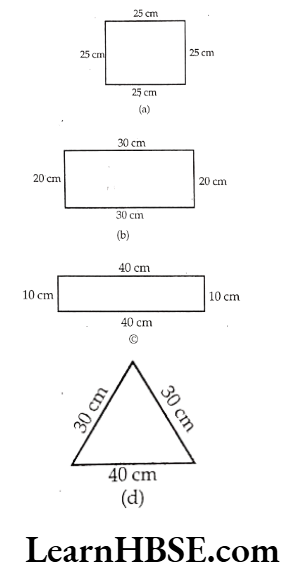
Solution. a) Perimeter = 25 cm + 25 cm + 25 cm +25 cm 100 cm.
b) Perimeter = 30 cm + 20 cm + 30 cm + 20 cm = 100 cm
c) Perimeter = 40 cm + 10 cm + 40 cm +10 cm = 100 cm
d) Perimeter = 40 cm + 30 cm + 30 cm = 100 cm
Inference: The perimeter of all the fig- ures is 100 cm.
Question 17. Avneet buys 9 square paving slabs, each with a side of \(\frac{1}{2}\) m. He lays them in the form of a square.
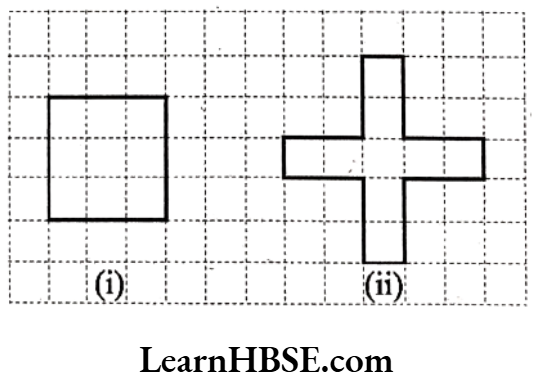
a) What is the perimeter of his arrangement in the above figure (1)?
b) Shari does not like his arrangement. She gets him to lay them out like a cross. What is the perimeter of her arrangement in the above figure (2)?
c) Which has greater perimeter?
d) Avneet wonders if there is a way of getting an even greater perimeter. Can you find a way of doing this? (The paving slabs must meet along complete edges i.e. they can- not be broken.)
Solution. a) Perimeter of the figure(1) = 4 x side
Length of the side of the square
= 3 x square
Slabs x length of each side
= 3 x 0.5 m = 1.5 m(each side = \(\frac{1}{2}\)m)
Perimeter of Avneet’s arrangement
= 4 x 1.5m = 6m.
b) Peimeter of the figure (2)
= 5 x length of each side
= 5 x 0.5 = 2.5 m (each side = \(\frac{1}{2}\)m)
Perimeter of the cross = 4 x figure
= 4 x 2.5 = 10 m
c) Shari’s arrangement has greater perimeter.
d) No, but we can achieve the same perimeter as shari’s arrangement by arranging all the squares in a row.
Haryana Board Class 6 Maths Solutions For Chapter 10 Mensuration Exercise 10.2
Question 1. Find the areas of the following figures by counting squares.
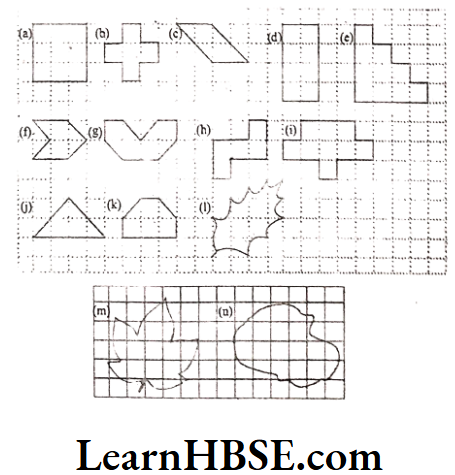
Solution. a)
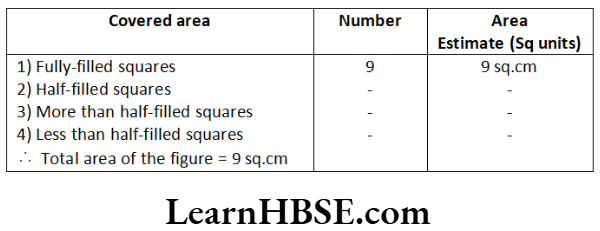
b)
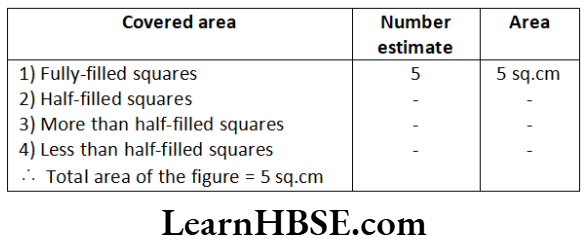
∴ Total area of the figure = 5 sq.cm
c) Fully-filled squares = 2
Half-filled squares = 4
Area covered by fully squares = 2 × 1 = 2 sq. cm
Area covered by half squared = 4 x \(\frac{1}{2}\) = 2 sq. cm
Total area = 4 sq.cm.
d) Fully-filled squares = 8
∴ Total area = Area covered by full squares
=8 × 1 sq.cm
= 8 sq. cm
e) Fully filled squares = 10
∴ Total area = Area covered by full squares
= 10 × 1 sq cm.
= 10 sq.cm.
f) Fully-filled squares = 2
Half-filled squares = 4
Area covered by fully squares = 2 x 1 sq.cm
= 2 sq.cm
Area covered by half squares = 4 x \(\frac{1}{2}\) sq.cm
= 2 sq. cm.
∴ Total area = 2 sq.cm + 2 sq.cm
= 4 sq.cm
g) Fully-filled squares = 4
Half-filled squares = 4
Area covered by full squares
= 4 x 1 sq. cm = 4 sq. cm
Area covered by half squares
= 4 x \(\frac{1}{2}\) sq. cm = 2 sq. cm
∴ Total area 4 sq. cm + 2 sq. cm
= 6 sq. cm.
h) Fully-filled squares = 5
∴ Total area = Area covered by full squares
= 8 x 1 sq. cm = 5 sq. cm
i) Fully-filled squares = 9
∴ Total area = Area covered by full squares
= 9 × 1 sq. cm
= 9 sq. cm
j) Fully-filled squares = 2
Half filled squares = 4
Area covered by full squares
= 2 x 1 sq. cm
= 2 sq. cm
Area covered by half squares
= 4 x \(\frac{1}{2}\) sq.cm = 2 sq.cm
∴ Total area 2 sq. cm + 2 sq. cm
= 4 sq. cm
k) Fully filled squares = 4
Half filled squares = 2
Area covered by full squares
= 4 × 1 sq. cm
= 4 sq. cm
Area covered by half squares
= 2 x \(\frac{1}{2}\) sq.cm
= 1 sq. cm
∴ Total area = 4 sq. cm + 1 sq. cm
= 5 sq. cm
1) Fully-filled squares = 4 = 4 sq.cm
Half-filled squares
= 2 = 2 x \(\frac{1}{2}\) = 1 sq.cm
More than half filled squares
= 3 = 3 x 1 sq cm = 3 sq.cm
∴ Total area
= 4 sq. cm + 3 sq. cm
= 7 sq.cm
m) Fully filled squares = 7 x 1 sq.cm
= 7 sq.cm
Half-filled squares = More than half filled squares
= 7 x 1 sq.cm = 7 sq.cm
Less than half filled squares = 4
Total area = 7 sq. cm + 7sq.cm
= 14 cm.
n) Fully filled squares = 9 x 1 = 9 sq.cm
Half-filled squares
More than half filled squares
= 9 x 1 = 9 sq.cm
Total area = 9 sq. cm + 9 sq.cm
= 18 sq.cm
Question 2. Find the area of the floor of your classroom.
Solution. Let’s assume the length of the classroom is 10 meters and the width is 8 meters.
Area = 10 meters x 8 meters = 80 sq.m.
So, the area of the floor of the classroom would be 80 sq m.
Question 3. Find the area of any one door in your house.
Solution. The most common standard door size is 80 inches (6.67) feet) in height and 36 inches (3 feet) in width area of door
= Height x Width
Area of door = 80 inches x 36 inches = 2880 sq. inches.
To convert square inches to square feet, divide the area by 144 (since there are 144 square inches in a square foot):
Area of door (in square feet) = 2880 square inches/144 = 20 square feet.
There fore, the approximate area of standard -size door in a house is around 20 square feet.
Haryana Board Class 6 Maths Solutions For Chapter 10 Mensuration Exercise 10.3
Question 1. Find the areas of the rectangles whose sides are:
a) 3 cm and 4 cm
b) 12 m and 21 m
c) 2 km and 3 km
d) 2 m and 70 cm
Solution. a) 1 = 4 cm, b = 3 cm
Area of rectangle = 1 x b
= 4 x 3
= 12 sq. cm.
b) 1 = 21 m, b = 12 m
Area of rectangle = 1 x b
= 21 × 12
= 252 sq.m.
c) 1 = 3 km, b = 2 km
Area of rectangle = 1x b
= 3 × 2
= 16 sq.km.
d) 1 = 2 m, b = 70 cm = 0.7 m
Area of rectangle = 1 x b
= 2 × 0.7
= 1.4 sq.m.
Question 2. Find the areas of the squares whose sides are:
a) 10 cm
b) 14 cm
c) 5 m
Solution. a) a = 10 cm
Area of the square a2 sq. cm
= 102 sq. cm
= 100 sq. cm
b) a = 14 cm
Area of the square = a2 sq. cm
= 142 sq. cm
= 196 sq. cm
c) a = 5 m
Area of the square = a2
= 52 sq.cm
= 25 sq.cm
Question 3. The length and breadth of three rectangles are as given below:
a)9 m and 6 m
b) 17 m and 3 m
c) 4 m and 14 m
Which one has the largest area and which one has the smallest ?
Solution. a) 1 = 9 m, b = 6m
Area of rectangle = l x b
= 9 x 6
= 54 sq.m.
b) 1 = 17 m, b = 3 m
Area of rectangle = 1 x b
= 17 × 3
= 51 sq. m.
c) 1 = 14 m, b = 4m
Area of rectangle
= 1 x b
= 14 × 4
= 56 sq.m
The rectangle(c) has the largest area and the rectangle (b) has the smallest area.
Word problems on Mensuration for Class 6 HBSE
Question 4. The area of a rectangular garden 50 m long is 300 sq.m. Find the width of the garden.
Solution. Area of a rectangular garden = 300 sq.m.
length = 50 m.
1 x b = 300
50 x b = 300
b = \(\frac{300}{50}\) m
b = 6m
∴ Width of the garden = 6m
Question 5. What is the cost of tiling a rectangular plot of land 500 m long and 200 m wide at the rate of 8 per hundred sq. m.?
Solution. Length of a rectangular piece of land = 500 m
Breadth of a rectangular piece of land = 200 m
Area = length x breadth
= 500 m × 200 m
= 1,00,000 sq.m.
Cost of tiling per 100sq. m = ₹ 8
Cost of tiling 1,00,000 sq. m
= \(₹ \frac{8}{100} \times 100000\)
= ₹ 8000
Question 6. A table-top measures 2 m by 1 m 50 cm. What is its area in square metres?
Solution. Length of the table = 2 m
Breadth of the table = 1 m 50 cm = 1.5 m
Area of the table = length x breadth
= 2 × 15 sq.m
= 3 sq.m.
Question 7. A room is 4m long and 3 m 50 cm wide. How many square metres of carpet is needed to cover the floor of the room?
Solution. Length of the room = 4 m = 4 m
Breadth of the room = 3 m 50 cm
= 3.50 m
∴ Area of the room
= length x breadth
= 4m x 3.50 m
= 14 sq.m.
∴ 14 sq. m of carpet is needed to cover the floor.
Question 8. A floor is 5m long and 4 m wide. A square carpet of sides 3 m is laid on the floor. Find the area of the floor that is not carpeted.
Solution. Length of the floor = 5 m
Breadth of the floor = 4 m
Area of the floor = length x breadth
= 5 x 4 sq. m
= 20 sq.m
Area of the square carpet = a2
= (3)2 sq. m
= 9 sq. m.
Area of the floor that is not carpeted
= 20 sq.m. – 9 sq.m
= 11 sq.m.
Question 9. Five square flower beds each of sides 1 m are dug on a piece of land 5 m long and 4 m wide. What is the area of the remaining part of land?
Solution. Area of square flower bed = a2 sq. m
=(1)2sq. m
= 1 sq. m
∴ Area of 5 square flower beds
= 1 x 5 sq. m
= 5 sq. m
Length of the piece of land = 5 m
Breadth of the piece of land
= length x breadth
= 4 x 5 sq. cm
= 20 sq. m
Area of remaining part of land
= 20 sq. m – 5 sq. m
= 15 sq. m
Question 10. By splitting the following figures into rectangles find their areas.
(The measures are given in centimetres)
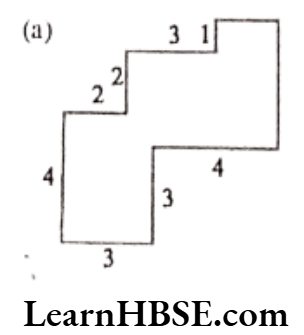
Solution. a) Area of the figure
= (3 x 3) + (1 x 2) + (3 x 3) + (4 × 2) sq. cm
= 9 + 2 + 9 + 8 sq.cm
= 28 sq. cm
b) Area of the figure
= (3 x 1 + 3 x 1 + 3 x 1) sq. m
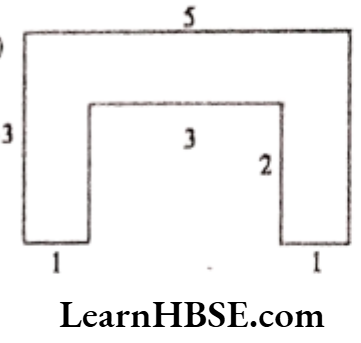
= 3 + 3 + 3 sq. cm
= 9 sq. cm
Question 11. Split the following shapes into rectangles and find their areas. (The measures are given in centimetres)
Solution. a)
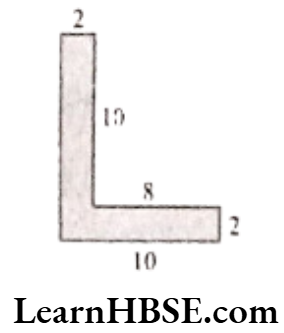
Area of the shape
= (8 x 2 + 12 x 2) sq. cm
= 16 + 24 sq. cm
= 40 sq. cm
b)
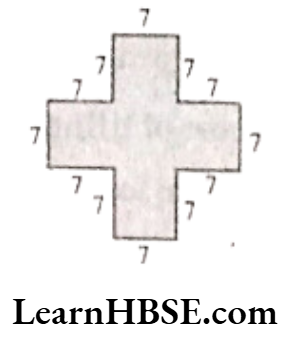
Area of the shape
= (7×7) + (7×7) + (7×7) + (7×7) + (7×7) sq.m
=(49 + 49 + 49 + 49 + 49) sq. m
= 245 sq. cm
c)
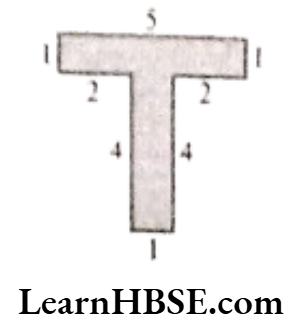
Area of the shape
= (5 x 1)+(4 x 1) sq. cm
= (5 + 4) sq. cm
= 9 sq. cm
Question 12. How many tiles whose length and breadth are 12 cm and 15 cm respectively will be needed to fit in a rectangular region whose length and breadth are respectively.
a) 100 cm and 144 cm
Solution. 1 = 144 cm, b = 100 cm
Area of rectangle = 1 x b
= 144 × 100
= 14400 sq.cm
Length of the tile = 5 cm
Breadth of the tile = 12 cm
Area of rectangle = 1 x b
= 5 x 12 sq.cm
= 60 sq.cm
∴ Number of tiles needed to fit the
region = \(\frac{\text { Area of theregion }}{\text { Area of tile }}\)
= \(\frac{14400}{60}\) = 240.
b) 70 cm and 36 cm
Solution. 1 = 70 cm, b = 36 cm
Area of the region = 70 × 36 sq.cm = 2520 sq.cm
Area of the tile = 60 sq.cm
Number of tiles needed = \(\frac{2520}{60}\)
= 42 sq.cm
A challenge!
On a centimetre squared paper, make as many rectangles as you can, such that the area of the rectangle is 16 sq cm (consider only natural number lengths).
a) Which rectangle has the greatest perimeter?
b) Which rectangle has the least perimeter? If you take a rectangle of area 24 sq cm, what will be your answers? Given any area, is it possible to predict the shape of the rectangle with thegreatest perimeter? With the least perimeter? Give example and reason.
Solution. Three rectangles can be made as follows:
1) Sides 16 cm and 1 cm
Perimeter = 2(1 + b)
= 2(16 + 1) = 34 cm
2) Sides 8 cm and 2 cm
Perimeter = 2(l + b)
= 2(8 + 2) = 20 cm
3) Sides 4 cm and 4 cm
Perimeter = 2(l + b)
= 2(4 + 4) = 16 cm
a) The rectangle (1) has the greatest perimeter.
b) The rectangle (3) has the least perimeter. If the area is 24 sq. cm. Four rectangles can be made as follows.
1) Sides 24 cm and 1 cm
Perimeter = 2(1 + b)
= 2(24 + 1) = 50 cm
2) Sides 4 cm and 6 cm
Perimeter = 2(1 + b)
= 2(4 + 6) = 20 cm
3) Sides 8 cm and 3 cm
Perimeter = 2 (1 + b)
= 2(8 + 3) = 22 cm
4) Sides 12 cm and 2 cm
Perimeter = 2(l + b)
= 2(12 + 2) = 28 cm
Yes! it is possible to predict the shape of the rectangle with the (1) greatest perimeter. 2) least perimeter.
Difference between perimeter and area Class 6
Haryana Board Class 6 Maths Solutions For Chapter 10 Mensuration Very Short Answer Questions
Question 1. Find the perimeters of the given figures.
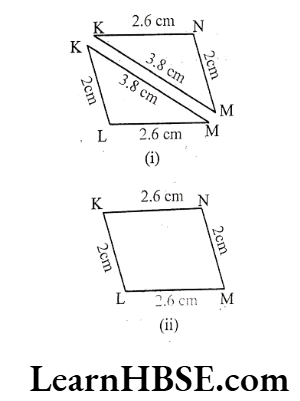
In the above figures (1) and (2), find the perimeter of ΔKLM, ΔKMN and ▢KLMN.
Solution. 1) Perimeter of ΔKLM
= KL + LM + KM
= 2 + 2.6 + 3.8 = 8.4 cm
Perimeter of ΔKMN
= KM + MN + KN
= 3.8 + 2 + 2.6 = 8.4 cm
2) Perimeter of ▢KLMN
= KL + LM + MN + KN
= 2 + 2.6 + 2 + 2.6 = 9.2 cm
Question 2. Find the perimeters of the following figures.
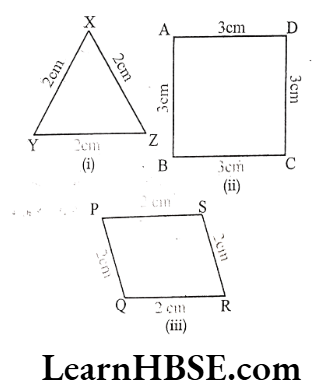
Solution. Perimeter of AXYZ
= XY + YZ + XZ
= 2 + 2 + 2 = 6 cm
2) Perimeter of a square ABCD
= AB + BC + CD + AD
= 3 + 3 + 3 + 3 = 12 cm
3) Perimeter of ▢PQRS
= PQ + QR + RS + PS
= 2 + 2 + 2 + 2 = 8 cm
Question 3. Find the area of a square with side 16 cm.
Solution.
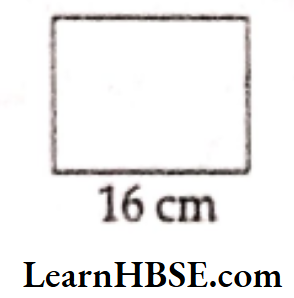
Length of the side of a square = 16 cm
Area of a square = side x side
= 16 x 16 = 256 cm2
Question 4. Length and breadth of a rectangle are 16 cm and 12 cm respectively. Find its
Solution.
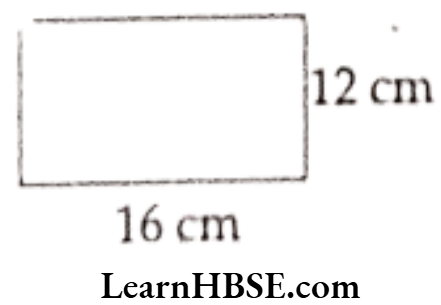
Length of a rectangle l = 16 cm
Its breadth = b = 12 cm
Area of a rectangle
= 1 x b
= 16 × 12
= 192 cm2
Question 5. Find the area of the rectangle of measurements 15cm and 8cm as length and breadth respectively.
Solution.
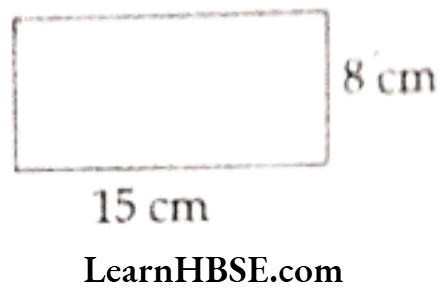
Length of a rectangle = 1 = 15 cm
Its breadth = b = 8 cm
Area of a rectangle = l x b
= 15 x 8
= 120 cm2
Question 6. Find the area of a square whose perimeter is 64m.
Solution. Perimeter of a square = 64 m
Perimeter of a square
= 4 x side(s)
= 4 x s = 64
s = \(\frac{64}{4}\) = 16
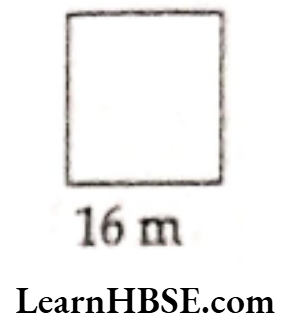
Side of a square(s) = 16 m
∴ Area of a square = s x s
= 16 x 16 = 256 m2
Question 7. Ritu went to a park 130 m long and 90 m wide. She took one complete round of it. What distance did she cover?
Solution.
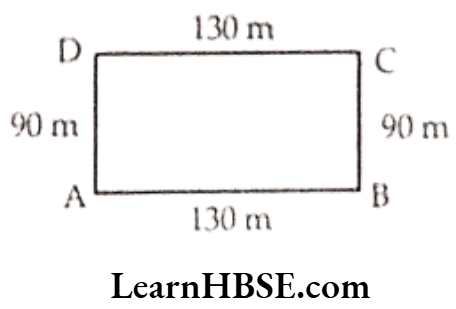
Total distance covered by Ritu = Perimeter of the park ABCD
= AB + BC + CD + DA
= 130 + 90 + 130 + 90
= 440 m.
Question 8. Find the perimeter of given shape.
Solution.
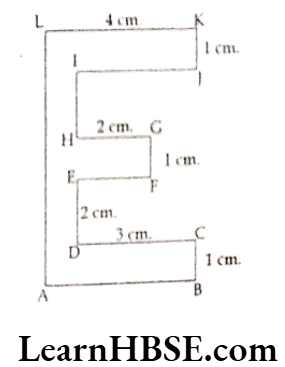
IJ = DC = 3 cm; EF = HG = 2 cm
AB = LK = 4 cm; FG = KJ = CB = 1 cm
AL = BC + DE + FG + HI + JK
= 1 + 2 + 1 + 2 + 1 = 7 cm.
Perimeter
= AB + BC + CD + DE + EF + FG + GH + HI + IJ + JK + KL + LA
= 4 + 1 + 3 + 2 + 2 + 1 + 2 + 2 + 3 + 1 + 4 + 7 = 32 cm.
Question 9. Length and breadth of a rectangle are 15 cm. and 10 cm. Find the perimeter.
Solution. Length of the rectangle = 15 cm.
Breadth = 10 cm.
Perimeter of the rectangle
= 2 (length + breadth)
= 2 (15 + 10)
= 2 x 25 = 50 cm.
Question 10. Find the perimeter of a rectangular field which is 36 m. long and 24 m. wide.
Solution. Length of the rectangle field (1) = 36 m.
Breadth of the field (b) = 24 m.
∴ Perimeter of the field = 2(1 + b)
= 2(36 + 24)
= 2 x 60 = 120 m.
Haryana Board Class 6 Maths Solutions For Chapter 10 Mensuration Short Answer Questions
Question 11. Find the perimeter of
1) An equilateral triangle whose side is 3.5 cm.
Solution.
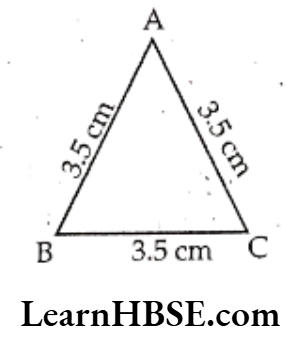
The length of the side of an equilateral triangle = 3.5 cm
Perimeter of an equilateral triangle
= 3 x length of the side
= 3 x 3.5 – 10.5 cm
2) A square whose side is 4.8 cm.
Solution.
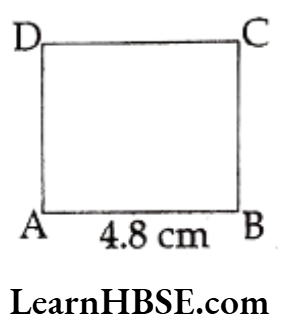
The length of the side of a square = s = 4.8 cm
Perimeter of square
= 4 x length of the side
= 4 x 4.8 = 19.2 cm
Question 12. Length and breadth of top of one table is 160cm and 90cm respectively. Find how much length of beading is required for each table.
Solution.

A table is in the shape of a rectangle.
Length of a table = l = 160 cm
Its breadth = b = 90 cm
∴ The length of beading is required for each table
= Perimeter of the rectangular table.
= 2[1 + b]
= 2[160 + 90] = 2 × 250 = 500 cm
Question 13. Find the perimeter and area of a square of side 4 cm. Are these same? Give some examples to support your answer.
Solution. Length of the side of a square = 4 cm Perimeter of a square
= 4 x side = 4 x 4 = 16 cm
Area of a square = s2 = 42 = 16 cm2
In this condition perimeter and area of a square are equal.
For example length of the side be 6 cm.
Perimeter of a square
= 4 x s = 4 x 6 = 24 cm
Area of a square = s x s
= 6 × 6 = 36 cm
∴ Perimeter and area of a square need not be equal for all conditions.
Question 14. Find the area of the square whose perimeter is 48cm.
Solution. Perimeter of a square = 48 cm
Perimeter of a square = 4 × side
∴ 4 × side = 48
Side = \(\frac{48}{4}\) = 12
∴ Side of the square (s) = 12 cm
∴ Area of the square = s x s
= 12 x 12 = 144cm2
Haryana Board Class 6 Maths Solutions For Chapter 10 Mensuration Long Answer Questions
Question 15. Measurements of two rectangular fields are 50m x 30m and 60m x 40m. Find their perimeters. Check whether the perimeters are 2 x length + 2 x breadth.
Solution. Measurements of rectangle ABCD:
Length (l) Breadth (b)
Breadth (b)= 30 m

Perimeter of ▢ABCD
= AB + BC + CD + AD
= 50 + 30 + 50 + 30
= 160 m
Perimeter of ▢ABCD
=2 x length + 2 x breadth
= 2 (50) + 2 (30)
= 100 + 60
= 160 m
Yes, it is true.
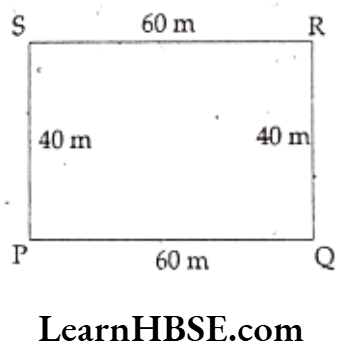
Length of rectangle PQRS = l = 60 m
Breadth (b) = 40 m
Perimeter of ▢PQRS
= PQ + QR + RS + PS
= 60 + 40 + 60 + 40
= 200 m
Perimeter of ▢PQRS
= 2 x length + 2 x breadth
=2 x 60 + 2 x 40
= 120 + 80.
= 200 m
Yes, it is true.
Question 16. Manasa has 24 cm of metallic wire with her. She wanted to make some polygons with equal sides whose sides are integral without milling into pieces values. Find how many such polygons she can make with the metallic wire?
Solution. The length of the wire that Manasa has = 24 cm
She has to make some polygons with equal sides i.e., [squares] whose sides are integral without milling into pieces values.
∴ The smallest length of the side of a polygon [square],
she wants to make is (s) = 1 cm
Perimeter of one polygon [square]
= 4 x side
= 4 x 1 = 4 cm
∴ Number of polygons [square] that she can make with the length of 24 cm metallic wire
= \(\frac{\text { Length of the wire }}{\text { Perimeter of } 1 \text { square }}=\frac{24}{4}=6\)
Question 17. Find the perimeter of the following figures (1) and (2).
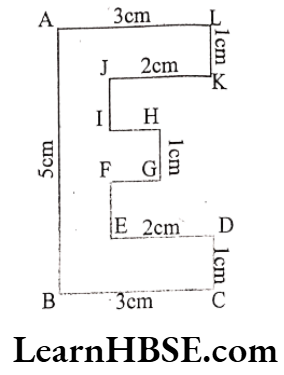
Solution. The perimeter of figure (1) ABCDEFGHIJKL
= AB + BC + CD + DE + EF + FG + GH + HI + IJ + JK + KL + AL
= 5 + 3 + 1 + 2 + 1 + 1 + 1 + 1 + 1 + 2 + 1 + 3 = 22 cm
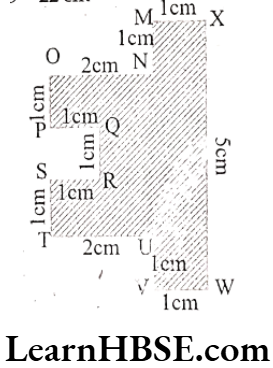
The perimeter of figure (2) MNOPQRSTUVWX
= MN + NO + OP + PQ + QR + RS + ST + TU + UV + VW + WX + MX
= 1 + 2 + 1 + 1 + 1 + 1 + 1 + 2 + 1 + 1 + 5 + 1 = 18 cm
Question 18. If the length of a rectangle is 14cm and its perimeter is 3 times of its length. Find its area.
Solution. Length of a rectangle = 1 = 14cm
Its perimeter = 3 x length of a rectangle
= 3 x 14 = 42 cm
∴ Perimeter of a rectangle = 2 [1 + b]
= 2[14 + b] cm.
∴ By the problem 2[14 + b] = 42
14 + b = \(\frac{42}{2}\)
14+ b = 21
b = 21 – 14 = 7
∴ Breadth of a rectangle = b = 7 cm
∴ Area of a rectangle = 1 x b
= 14 x 7 = 98 cm2
Question 19. 14cm and 12cm are the length and breadth of a rectangle. If the breadth is increased by 6cm and length is decreased by 6cm, find the difference in areas.
Solution. Length of a rectangle = l = 14cm
Its breadth = b = 12 cm
Area of a rectangle = l x b
= 14 x 12 = 168 cm2
If the breadth is increased by 6 cm and length is decreased by 6 cm then so formed.
Length = l = (l – 6) cm;
breadth = b = (b + 6) cm = 14 – 6 = 8 cm
∴ Area of so formed rectangle
= l x b
12 + 6 = 18 cm
Area of new rectangle = 1 x b
= 8 × 18
= 144 cm2
∴ Difference in areas
= 168 cm2 – 144 cm2
= 24 cm2
Haryana Board Class 6 Maths Solutions For Chapter 10 Mensuration Objective Type Questions
Choose the correct answer:
Question 1. Perimeter of an equilateral triangle of side ‘s’ is
- 4s
- 2s
- 3s
- 6s
Answer. 3. 3s
Question 2. Perimeter of a regular hexagon of side 2 cm is
- 12 cm
- 10 cm
- 8 cm
- 12 sq.cm.
Answer. 1. 12 cm
Question 3. The space occupied by a closed figure is called its
- area
- perimeter
- segment
- point
Answer. 1. area
Question 4. The perimeter of triangle with sides \(\overline{A B}\), \(\overline{B C}\), \(\overline{C A}\)
- \(\overline{A B}\) + \(\overline{B C}\)
- \(\overline{A B}\) + \(\overline{B C}\) + \(\overline{C A}\)
- \(\overline{B C}\) + \(\overline{C A}\)
- A + B + C
Answer. 2. \(\overline{A B}\) + \(\overline{B C}\) + \(\overline{C A}\)
Question 5. The number of sides of a octagon is
- 6
- 7
- 10
- 8
Answer. 4. 8
Question 6. If length and breadth of a rectangle is 12 cm and 8 cm respectively, then its perimeter is ….
- 20 cm
- 96 cm
- 40 sq.m.
- 40 cm
Answer. 4. 40 cm
Question 7. Area of a rectangle
- l x b
- 2(l + b)
- 4s
- s2
Answer. 1. l x b
Question 8. A = s2 is the formula for
- Area of a rectangle
- Area of a square
- Perimeter of a square
- Perimeter of a rectangle
Answer. 2. Area of a square
Question 9. The sum of all the lengths of a polygon is called ………..
- area
- perimeter
- volume
- none
Answer. 2. perimeter
Question 10. How many sides are there in a pentagon?
- 2
- 9
- 6
- 5
Answer. 4. 5
Question 11. In a rectangle l = 3 cm, b = 0.9 cm then A = …… cm2
- 9
- 27
- 2.7
- 3
Answer. 3. 2.7
Question 12. Side of an equilateral triangle is 3 cm then its perimeter is ………. cm.
- 3.5
- 11
- 12
- 9
Answer. 4. 9
Question 13. Perimeter of rectangle is …..
- \(\frac{2}{3}\)(l + b)
- \(\frac{l+b}{2}\)
- 2(l + b)
- \(l+\frac{\mathrm{b}}{2}\)
Answer. 3. 2(l + b)
Question 14. Perimeter of a square is 20 cm then its side is ………. cm.
- 10
- 5
- 4
- 7
Answer. 2. 5
Question 15. Identify the odd one from the following
- length
- breadth
- area
- perimeter
Answer. 3. area
Question 16. P = 2(l + b) then l = ……
- \(\frac{\mathrm{P}}{2}+\mathrm{b}\)
- \(\frac{P}{2}-l\)
- \(\frac{P}{2}-b\)
- \(\frac{P}{2}-2b\)
Answer. 3. \(\frac{P}{2}-b\)
Question 17. Formula to find area of square of side ‘a’ units is ………unit2.
- a
- 2a
- \(\frac{a}{2}\)
- a2
Answer. 4. a2
Question 18. The perimeter of regular hexagon of side 6 cm is ……….. cm.
- 20
- 36
- 15
- 16
Answer. 2. 36
Question 19. 1 m = ………. cm.
- 50
- 60
- 70
- 100
Answer. 4. 100
Question 20. The cost of fencing a square park of side 150 m at the rate of ₹ 10 per meter is
- 6000
- 5000
- 1100
- 1700
Answer. 1. 6000
Question 21. In a rectangle l = 36 m, b = 24 m, then P = …..m.
- 114
- 103
- 120
- 110
Answer. 3. 120
Question 22. Side of a square is 17 cm then its area is ……… cm2.
- 423
- 324
- 189
- 289
Answer. 4. 2889
Question 23. The area of a rectangle is 1,125 cm2. If its breadth is 25 cm then length = ….. cm.
- 25
- 40
- 15
- 45
Answer. 4. 45
Question 24. Perimeter of a regular pentagon of side 8 cm is ….. cm.
- 60
- 40
- 80
- 70
Answer. 2. 40
Question 25. ……… are the simple closed plane figures bounded by line segments.
- Area
- Perimeter
- Square
- Polygons
Answer. 4. Polygons
Question 26. The perimeter of a triangle is 30 cm. Sum of its two sides is 21 cm, then the length of 3rd side is …….. cm.
- 13
- 12
- 9
- 11
Answer. 3. 9
Question 27. Area measured in ……….units.
- square
- cubic
- Both A & B
- none
Answer. 1. square
Question 28. If the perimeter of a square is 48 cm then its side
- 12 cm
- 24 cm
- 6 cm
- 144 cm
Answer. 1. 12 cm
Question 29. If the area of a square is 144 cm2 then its perimeter is
- 12 cm
- 48 cm
- 24 cm
- 36 cm
Answer. 2. 48 cm
Question 30. If the side of a square is doubled then its area will be increased by
- doubled
- 3 times
- 4 times
- None
Answer. 3. 4 times
Question 31. If the side of a square is halved then its area will be
- same as original area
- halved
- 4 times increases
- \(\frac{1}{4}\) of original area
Answer. 4. \(\frac{1}{4}\) of original area
Question 32. If the length and breadth of rectangle are doubled then its area will be
- same as original area
- halved
- doubled
- increased by 4 times
Answer. 4. increased by 4 times
Question 33. If the length is doubled and breadth is tripled then its area will be
- doubled
- increased by 3 times
- increased by 6 times
- same as original area
Answer. 3. increased by 6 times
Question 34. A rectangular plot of land is 240 m by 200 m. The cost of fencing per meter is ₹ 10. What is the cost of fencing the entire field?
- ₹ 8800
- ₹ 8000
- ₹ 4800
- ₹ 8880
Answer. 1. ₹ 8800
Question 35. A piece of wire is 60 cm long. What will be the length of each side if the string is used to form and equilateral triangle
- 10 cm
- 15 cm
- 20 cm
- 30 cm
Answer. 3. 20 cm
Question 36. The perimeter of a rectangle whose lengths is ‘l’ meters and breadth is ‘b’ meters is ………… meters.
- l + b
- lb
- 2(l + b)
- 2l + b
Answer. 3. 2(l + b)
Question 37. The perimeter of a rectangle whose sides are 18 cm and 15 cm is ….. cm.
- 38
- 60
- 66
- 36
Answer. 3. 66
Question 38. A farmer has to cover three times the perimeter of field. The length is 10 m and the breadth is 8 m then total distance travelled by him is …… m.
- 108
- 100
- 18
- 36
Answer. 1. 108
Question 39. Perimeter of a square whose side is ‘a’ meters is ………… meters.
- a4
- 4 + a
- 2a
- 4a
Answer. 4. 4a
Question 40. The perimeter of a regular pentagon whose side is 5 cm is …… cm.
- 28
- 25
- 20
- 29
Answer. 2. 25
Question 41. The area of rectangle whose sides are 3 m and 4 m is …….. sq.m.
- 12
- 13
- 34
- 7
Answer. 1. 12
Question 42. The area of a square whose side is 4 cm is …….. sq.cm.
- 4
- 16
- 24
- 8
Answer. 2. 16
Question 43. The area of rectangle is 20 sq.cm and the length is 4 cm then the breadth is ….. cm.
- 10
- 4
- 3
- 5
Answer. 4. 5
Question 44. The area of rectangle whose measurements are given by length = 3 m and breadth = 40 cm is ……. sq.m.
- 340
- 120
- 1.2
- 12
Answer. 3. 1.2
Chapter 10 Mensuration Fill in the blanks:
Question 45. The perimeter of a square whose length is 4.5 cm ………..cm
Answer. 18
Question 46. The perimeter of an equilateral triangle is 30 cm then its side is ……..cm
Answer. 10
Question 47. The area of square is 12544 cm2 then its side is……cm
Answer. 112
Question 48. The perimeter of a rectangle is 48 cm, its length is 20 cm then its breadth = …………..cm.
Answer. 4
Question 49. The area of adjacent rectangle PQRS is ……………cm2.
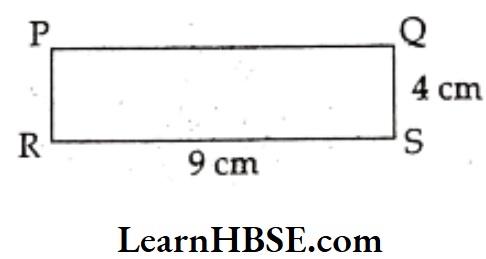
Answer. 36
Question 50. The cost of fencing a square park of side 250 m. at the rate of 20 per meter is.
Answer. 20,000
Question 51. The area of a square is 144 cm2 then its perimeter is ………..cm
Answer. 48
Question 52. The perimeter of given figure is………cm
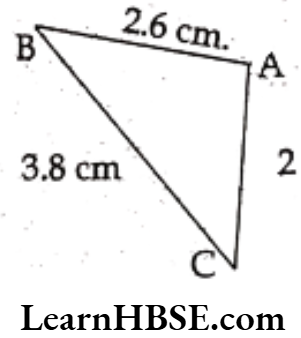
Answer. 8.4
Question 53. The perimeter of a square is 40 cm., then its side is.
Answer. 10 cm.
Question 54. The length of the boundary of closed figure is called its
Answer. perimeter
Question 55. Area of a rectangle is 100 cm2 its length and breadth are equal then its perimeter is………..
Answer. 40 cm.
Question 56. The perimeter of a square is 24 cm., then its area is …….
Answer. 36 cm2.
Question 57. The perimeter of a regular hexagon of side 8 cm., is……..
Answer. 48 cm.
Question 58. Which is different among 15 cm., 16 cm., 19 cm.2, 18 cm.
Answer. 19 cm2.
Question 59. The side of a square is 6 cm. The length and breadth of rectangle are 7 cm. and 5 cm. respectively. Which has less area?………..
Answer. rectangle
Question 60. Which is different among “length, breadth, side, perimeter, area”………
Answer. area
Question 61. 2(1+b) P is the formula for …………….
Answer. perimeter of a rectangle
Question 62. Which is different among 16 cm2, 17 cm2, 18 cm2, 20 cm2 ……
Answer. 18 cm.
Question 63. The sum of the lengths of line segments of the polygon is ………..
Answer. perimeter of the polygon
Question 64. If the area of a rectangular field is 1350 m2 and its length is 50 m then its breadth is ………
Answer. 27 m.
Question 65. If the length of the side of a square is 10 m. Then 100 square mts is its …….
Answer. area
Question 66.
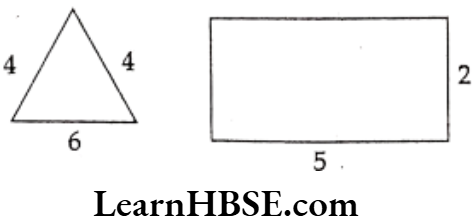
What is the relationship between these shapes?
Answer. perimeters are equal.
Question 67. The amount of surface enclosed by a closed figure is called its ……
Answer. area
Question 68. The perimeter of the regular hexagon is 18 cm then side is ……. cm.
Answer. 3
Question 69. The area of square whose side is 4 cm. is…………………….cm.
Answer. 16
Question 70. The area in square metre of a piece of cloth 1 m 25 cm wide and 2.m long is …….cm2.
Answer. 25
Question 71. The perimeter of an equilateral triangle whose side is 4 cm is…….cm.
Answer. 12
Question 72. The perimeter of a triangle whose sides are 3 cm, 4 m and 6 cm is ………….. cm.
Answer. 13
Question 73. The perimeter of the rectangle given in the figure is ………. cm
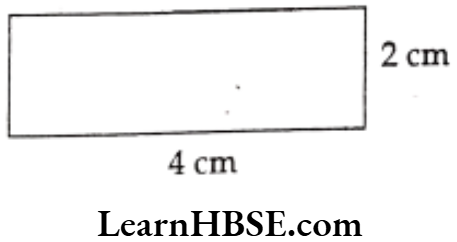
Answer. 12
Haryana Board Class 6 Maths Solutions For Chapter 10 Mensuration Match The Following:
Question 74.
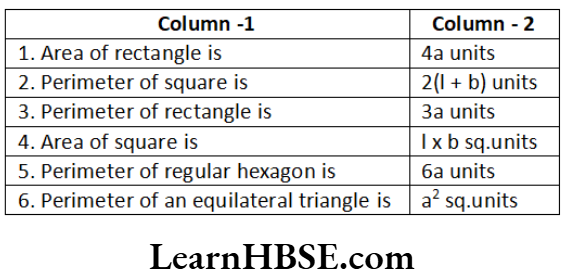
Answer. 1 – D, 2 – A, 3 – B, 4 – F, 5 – E, 6 – C.


